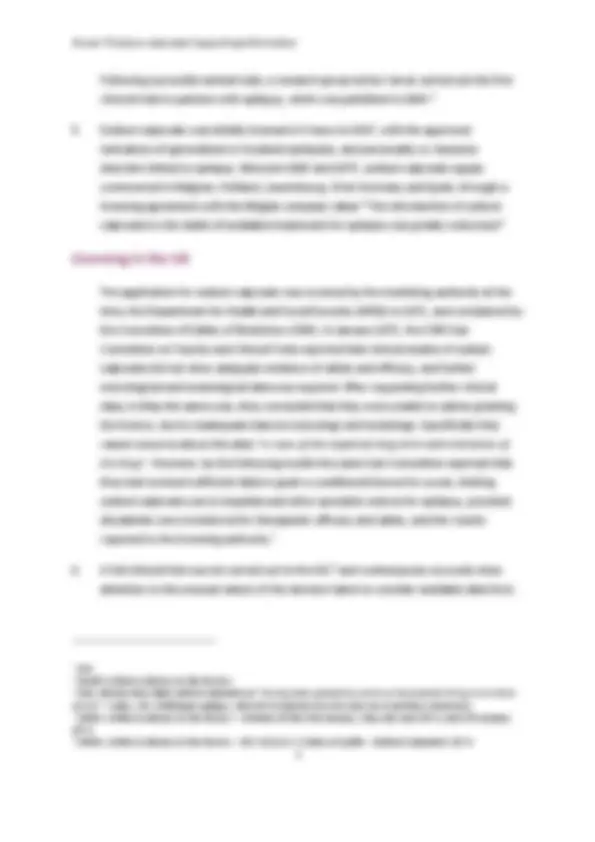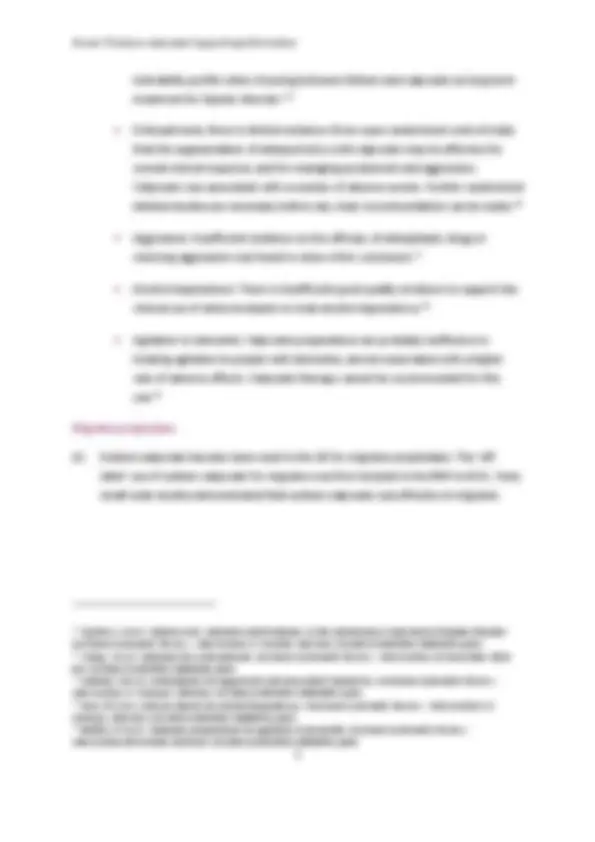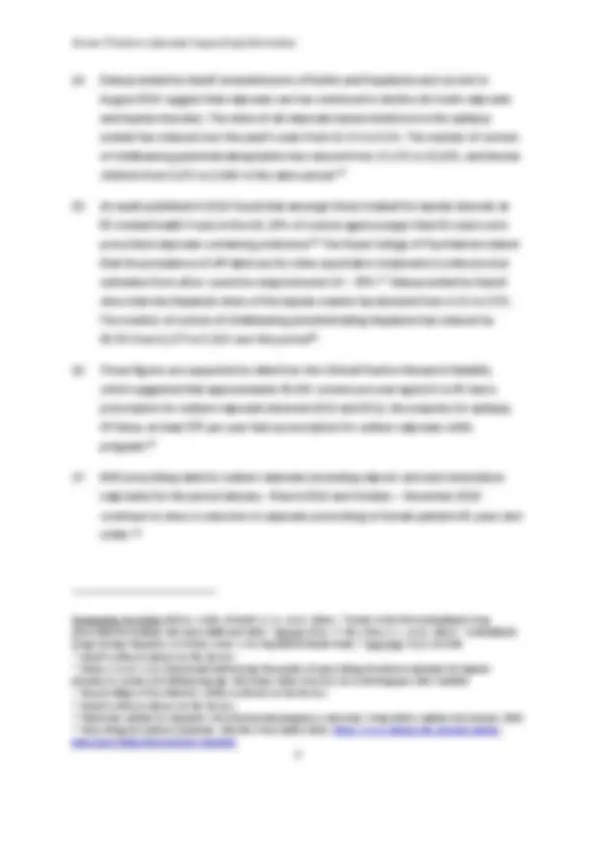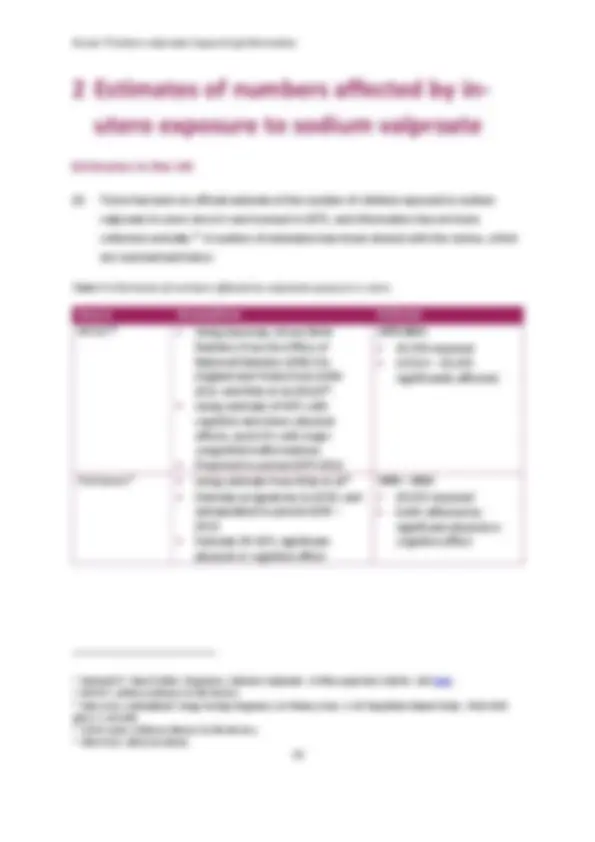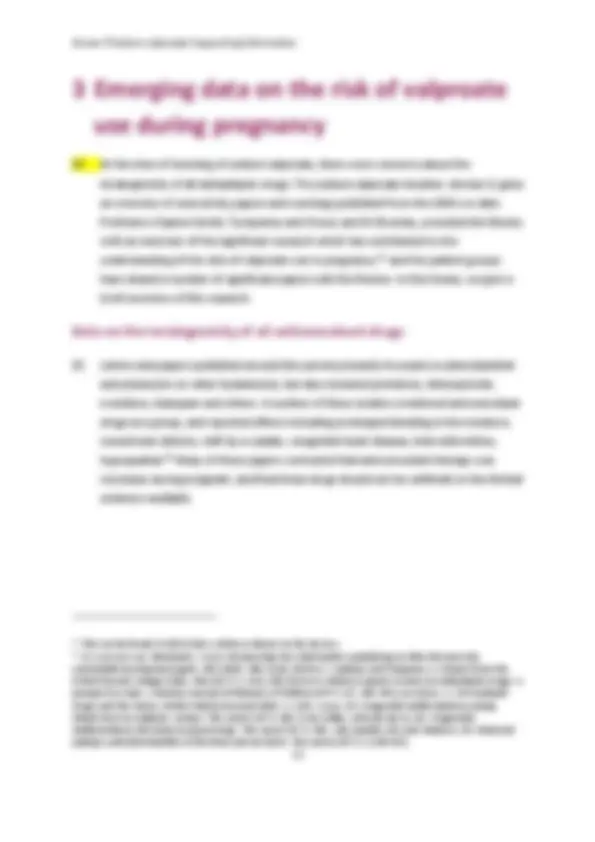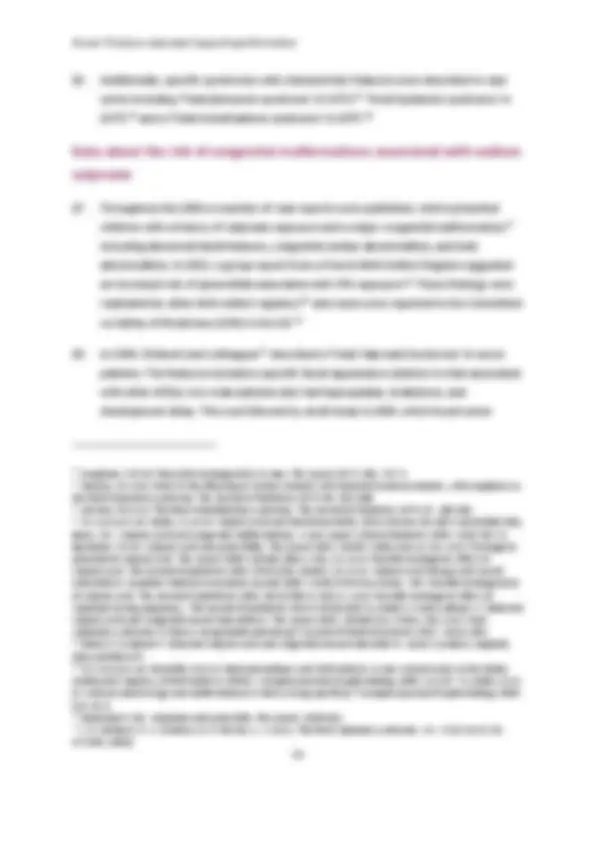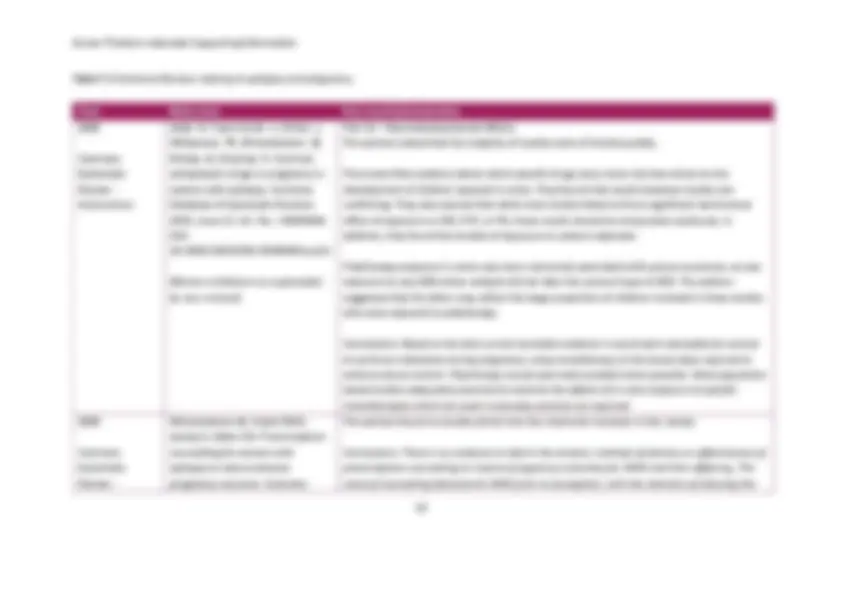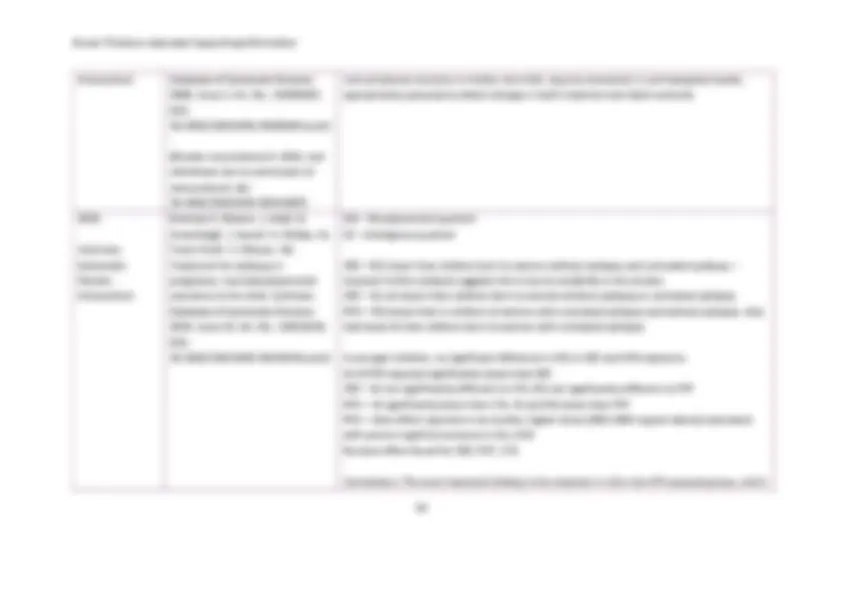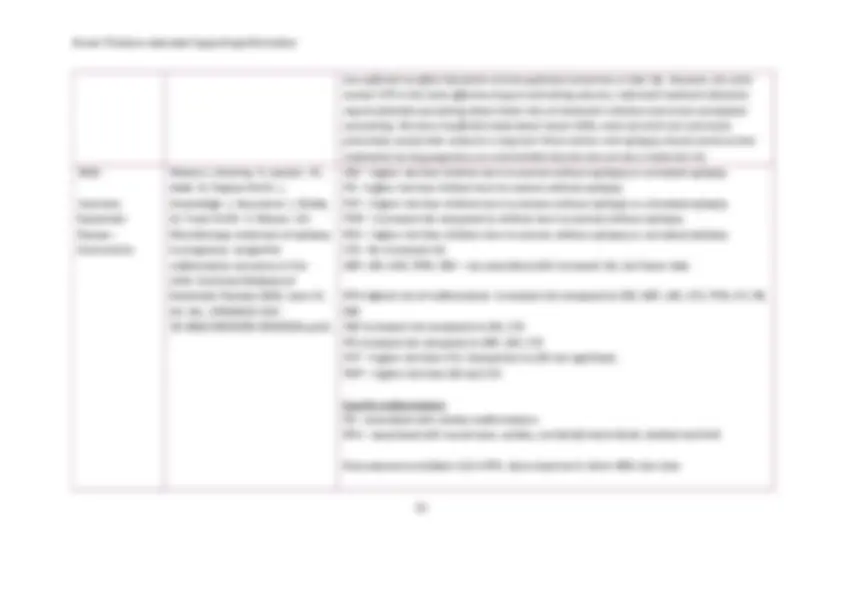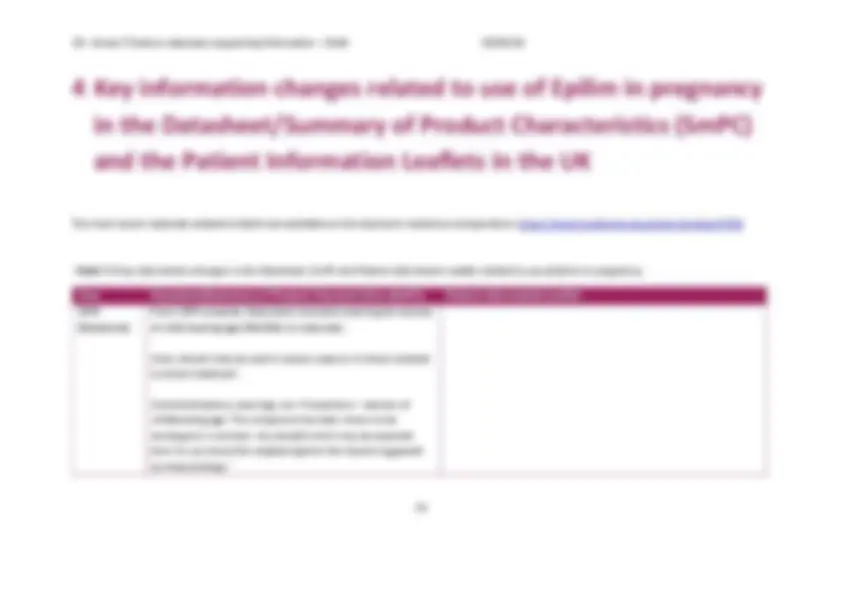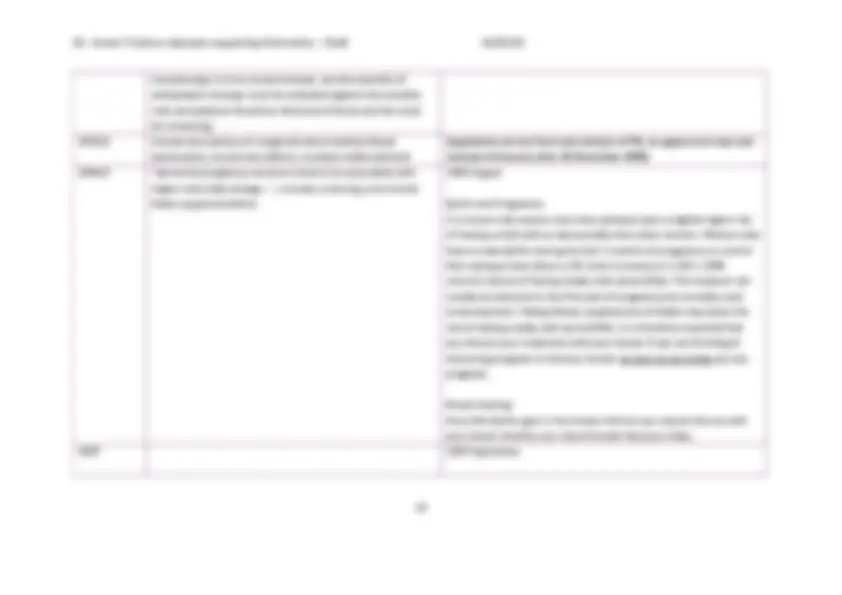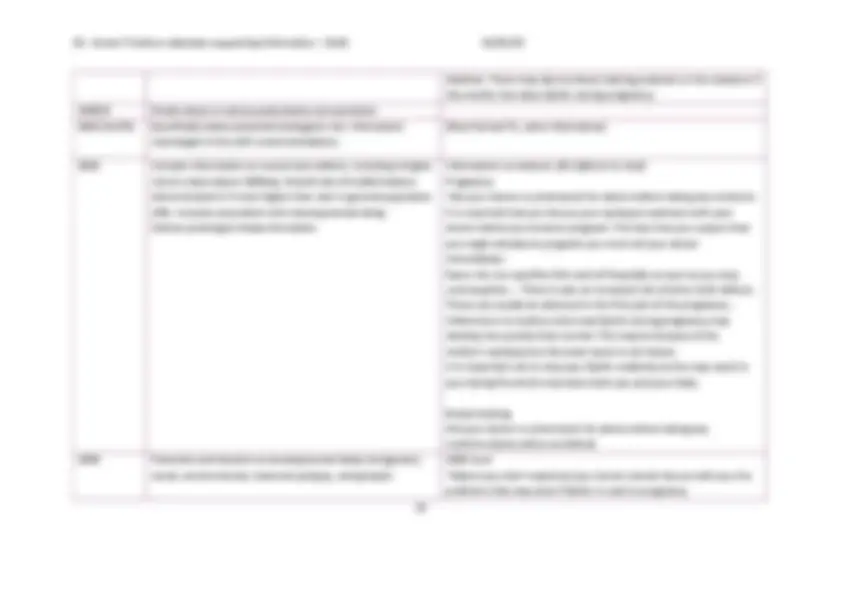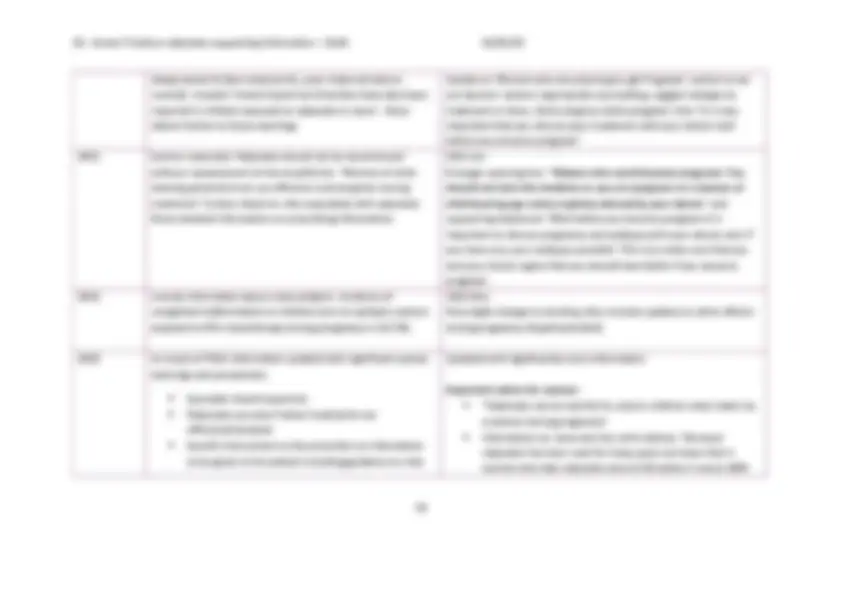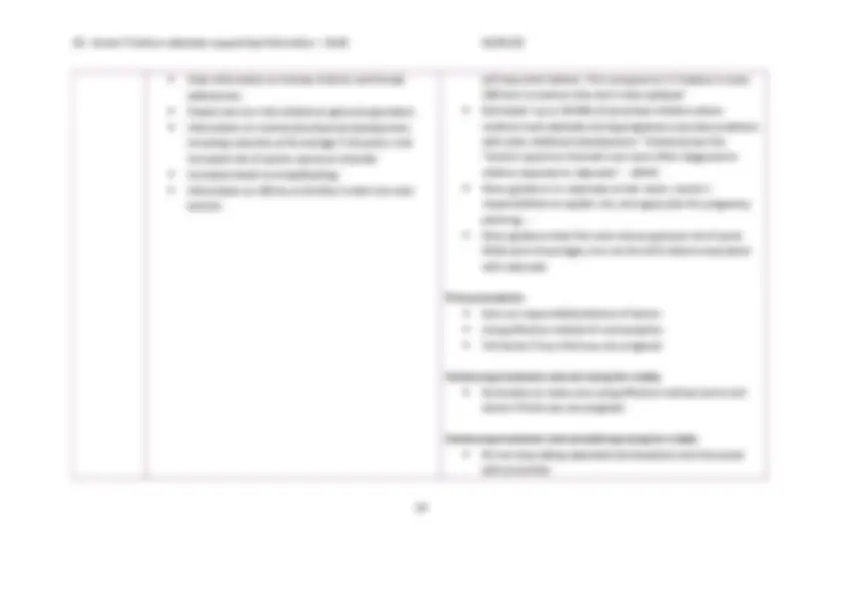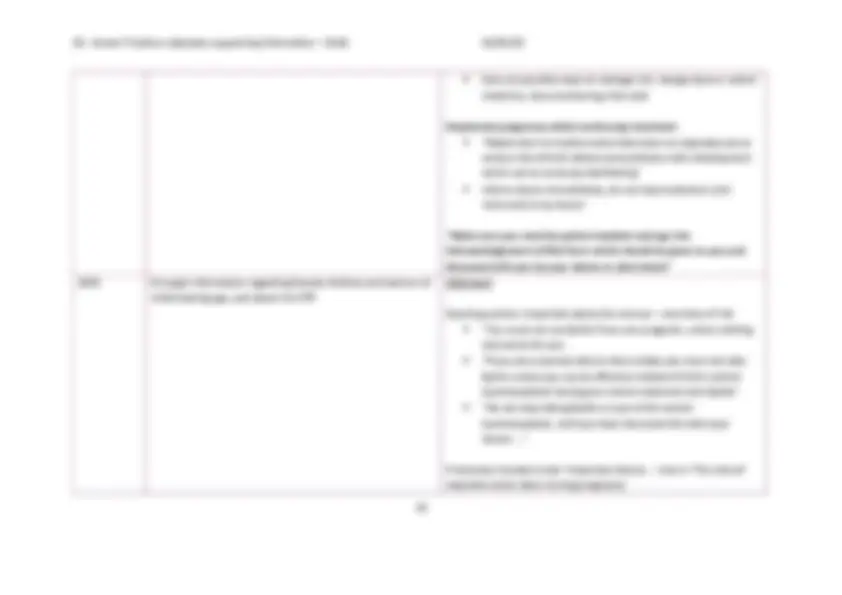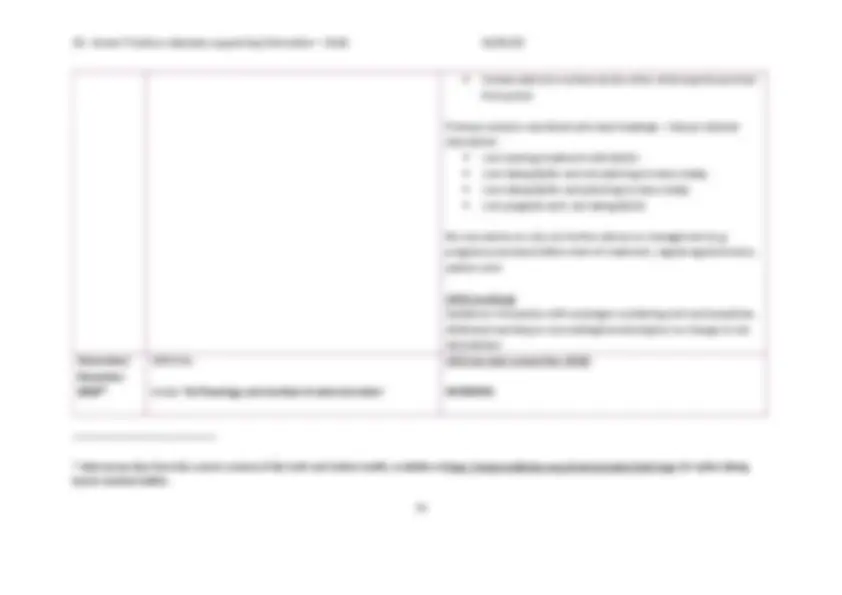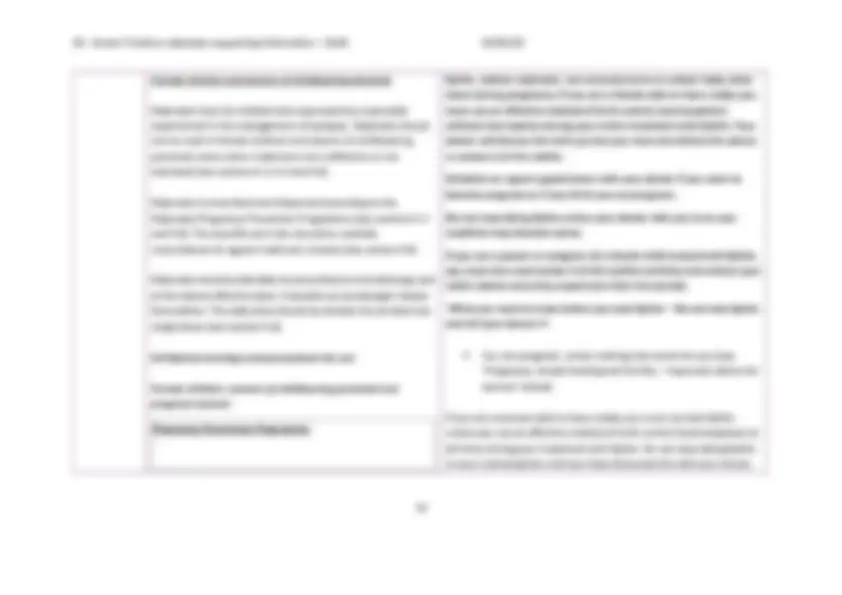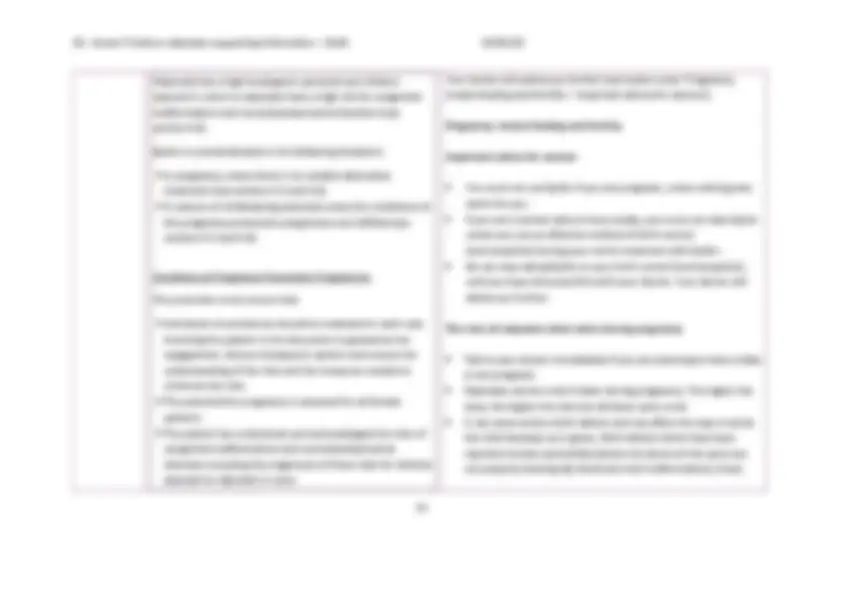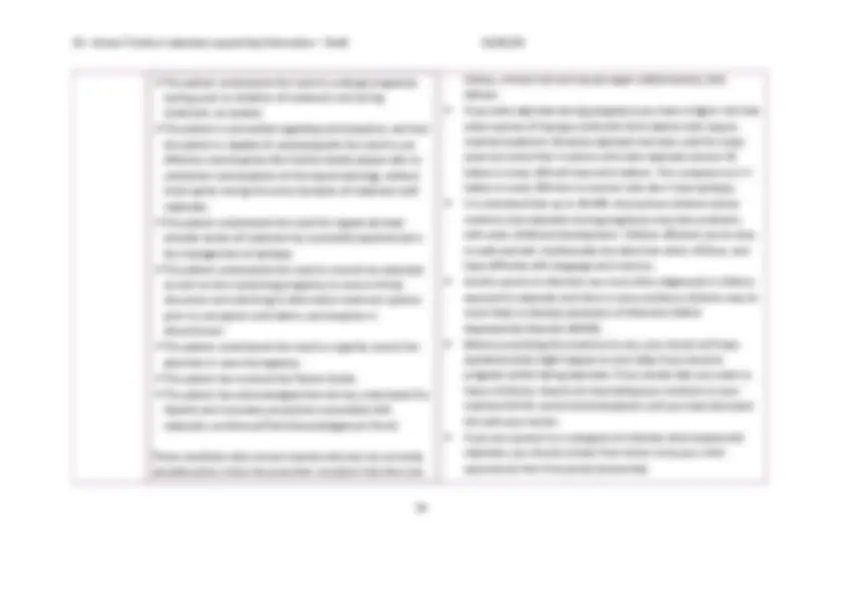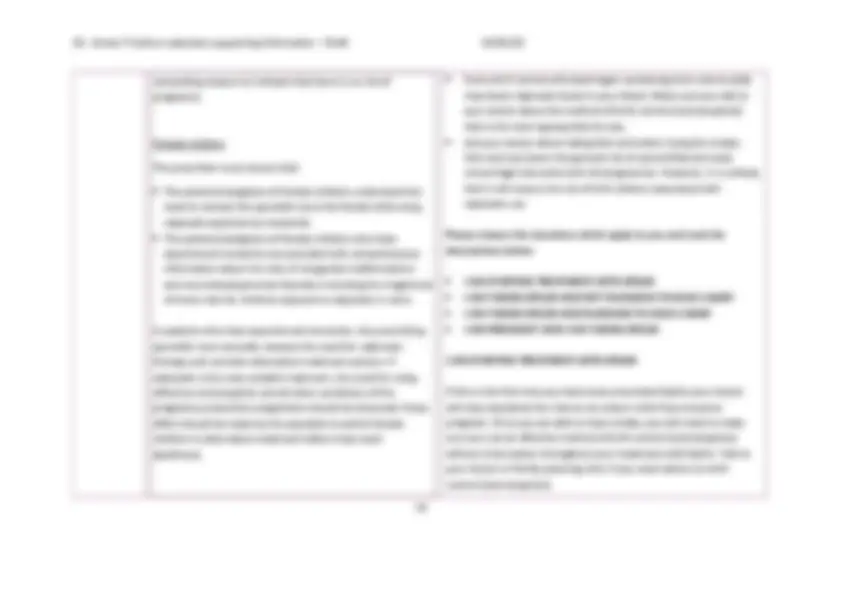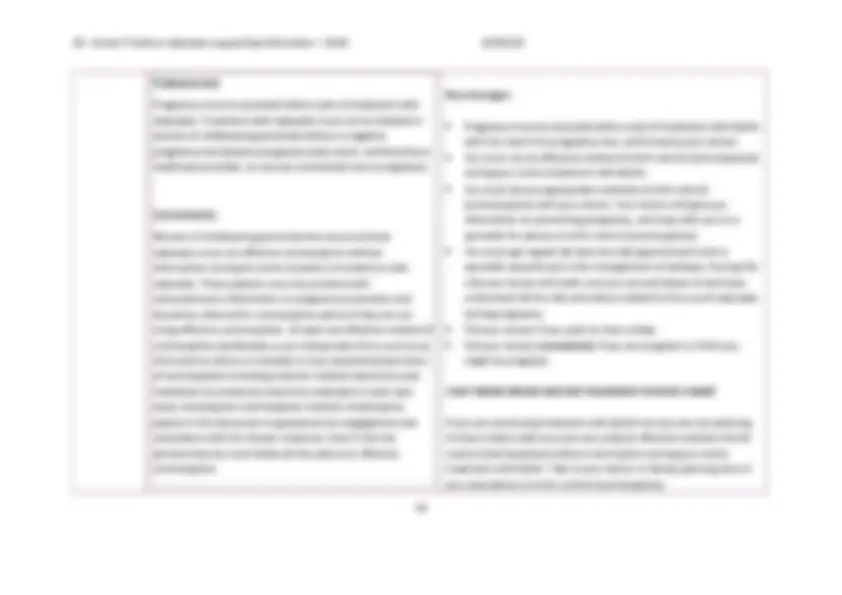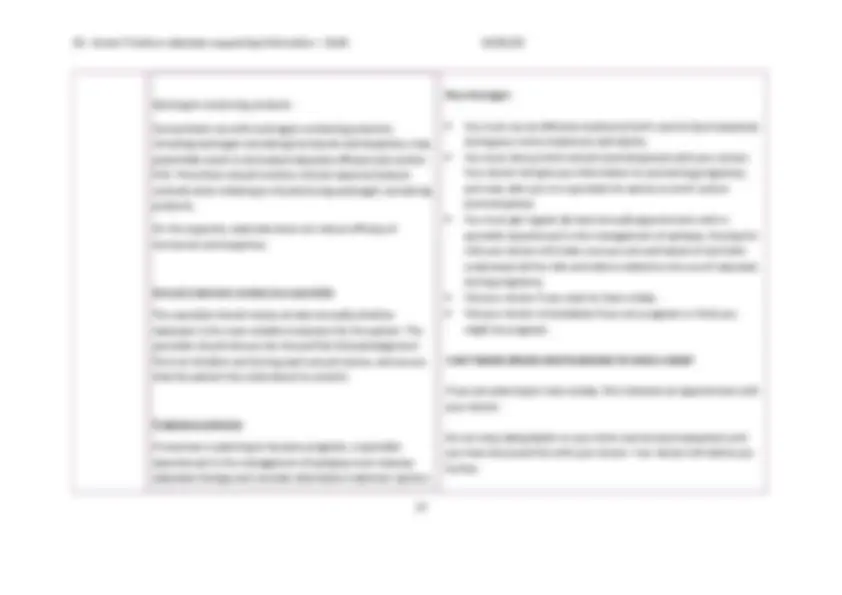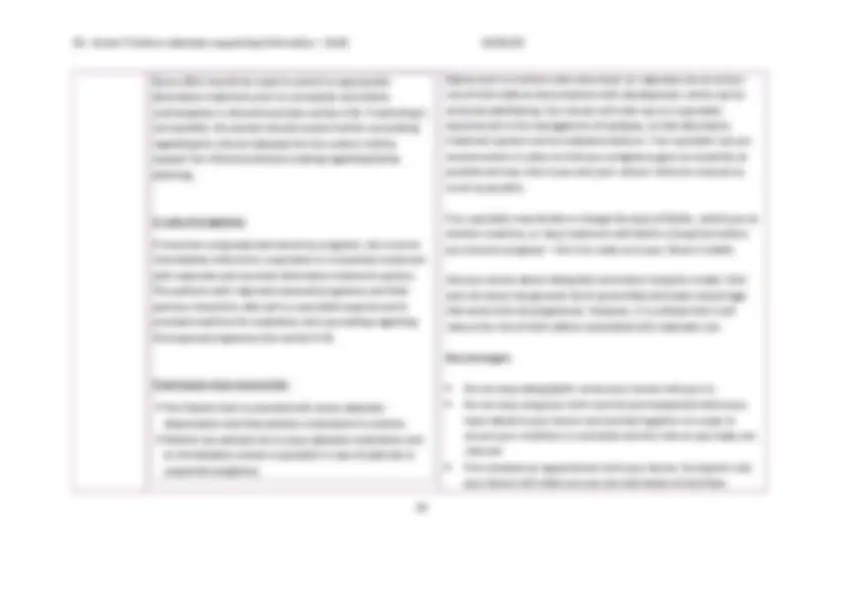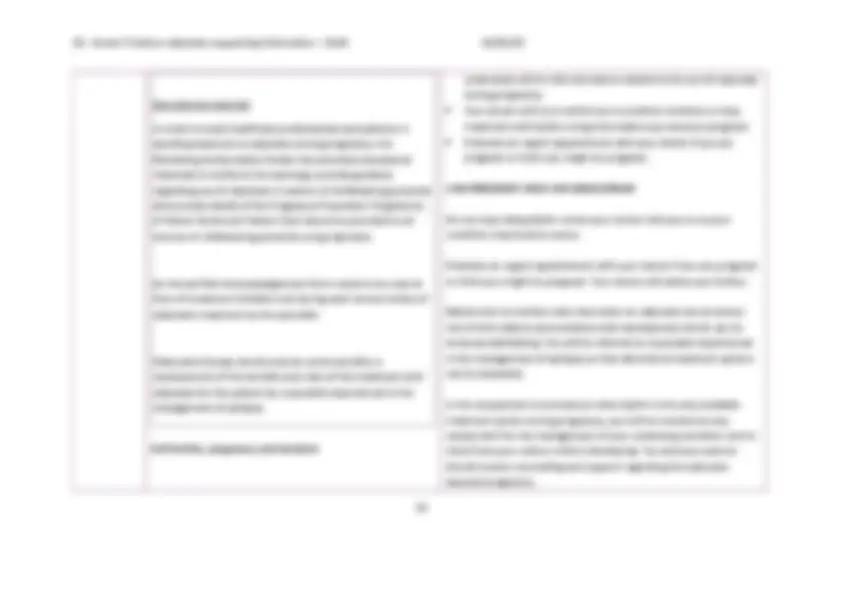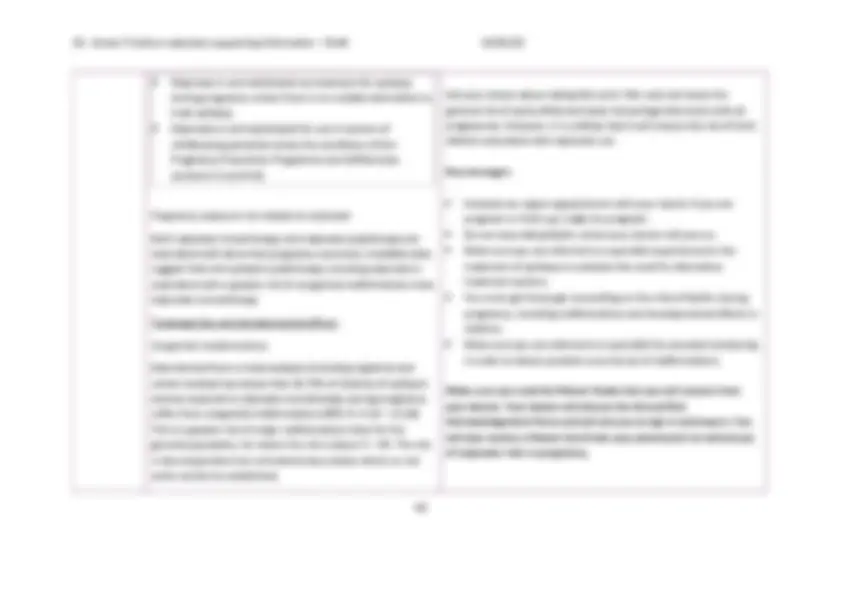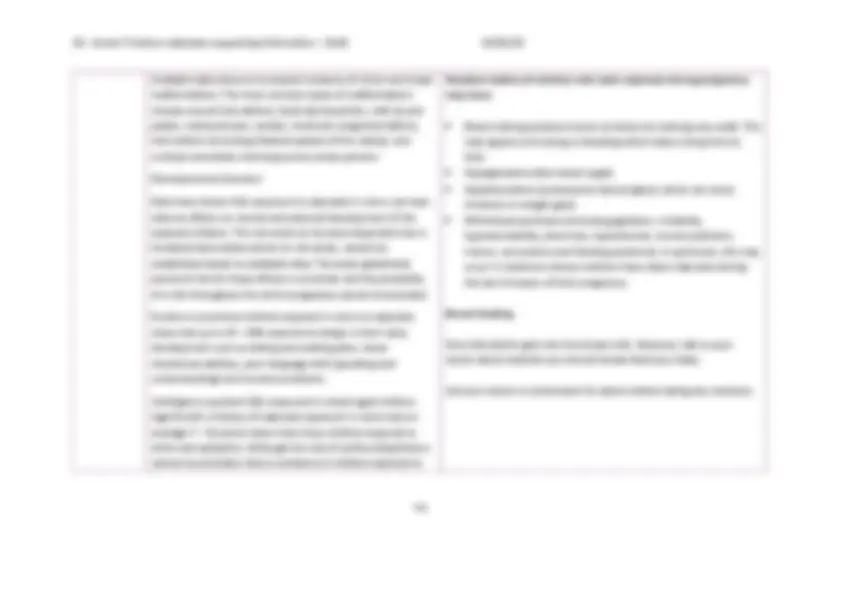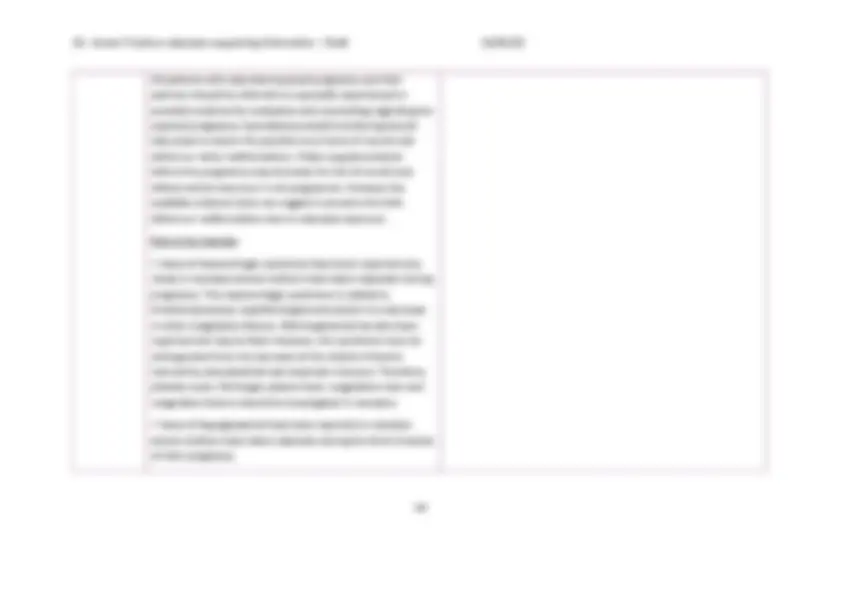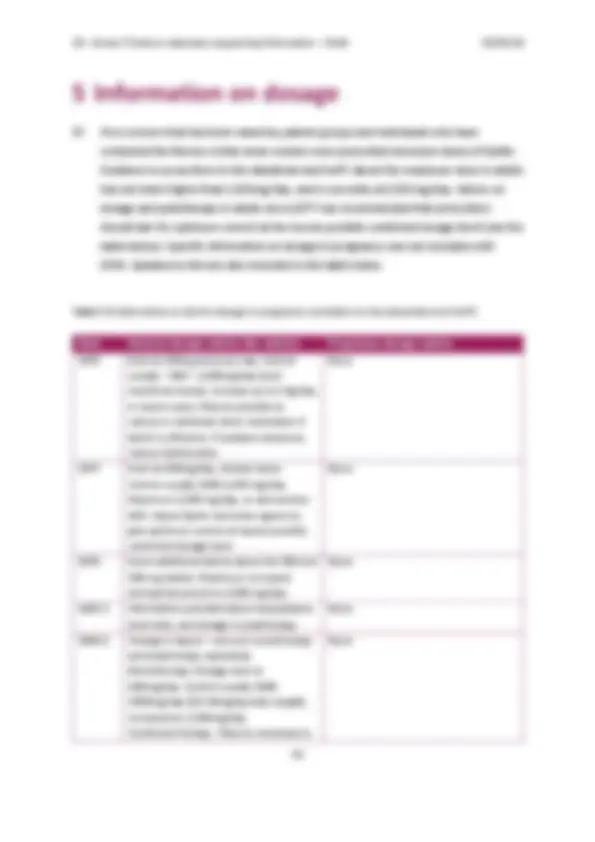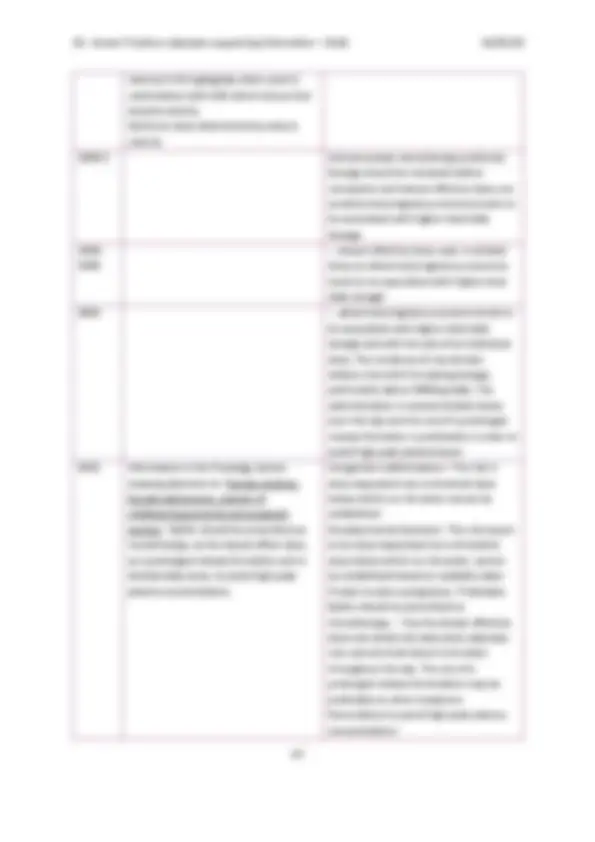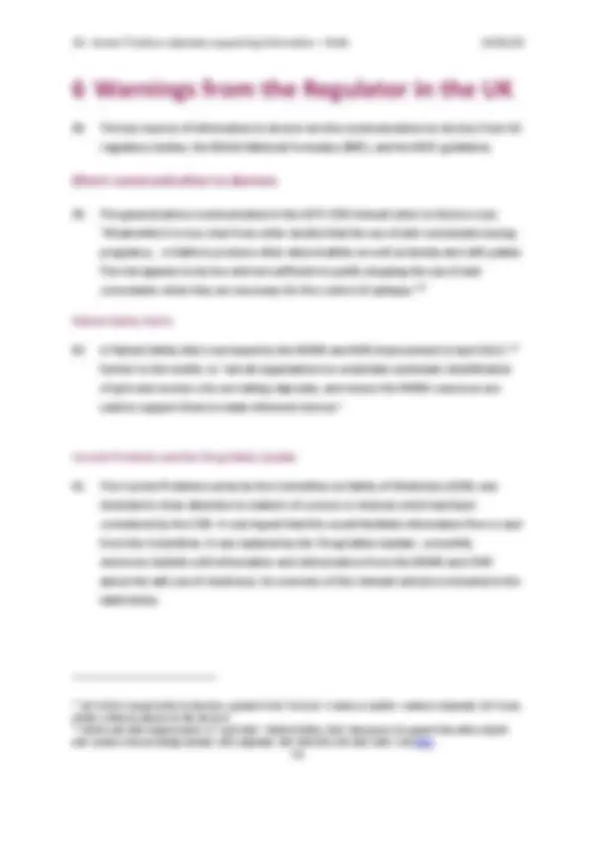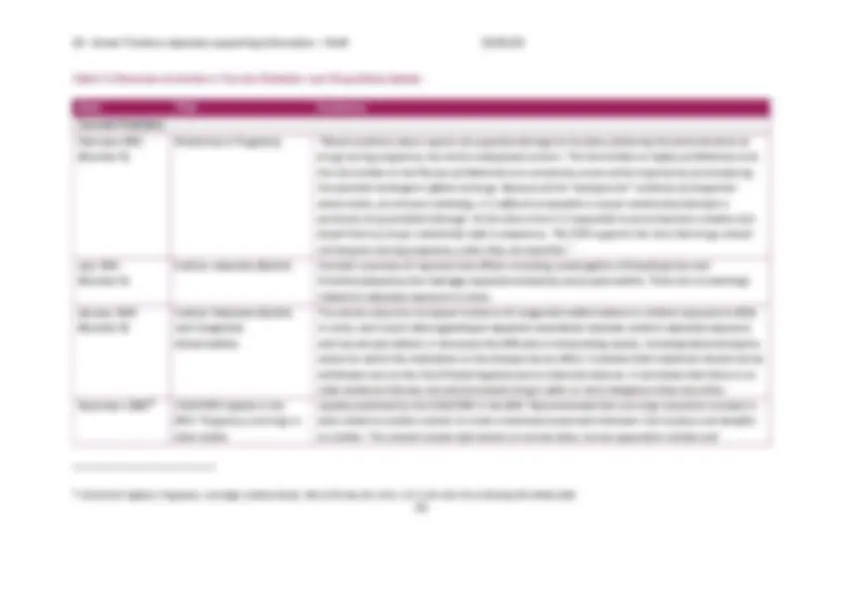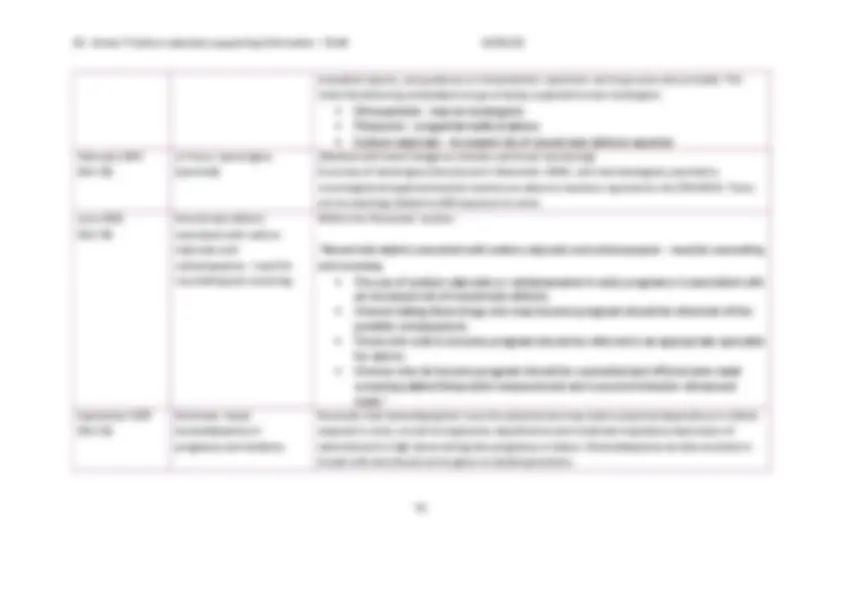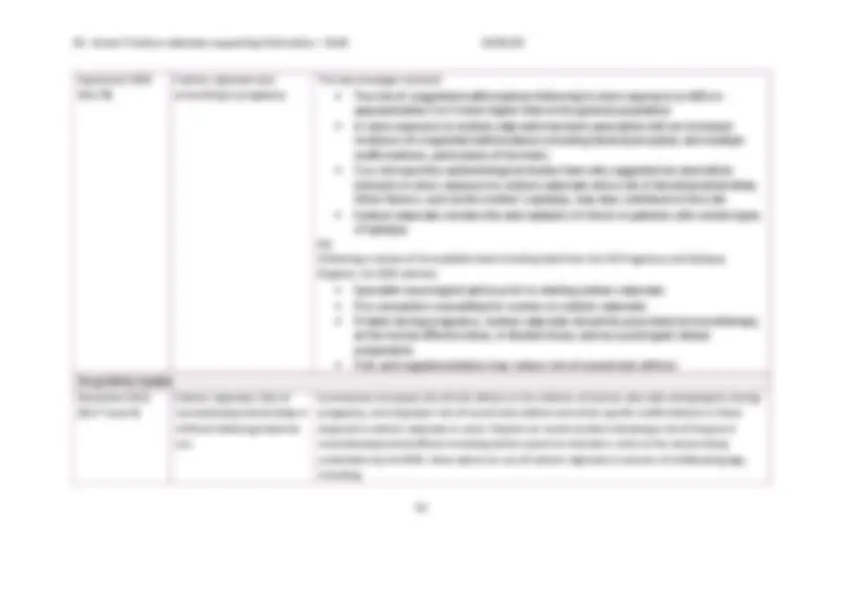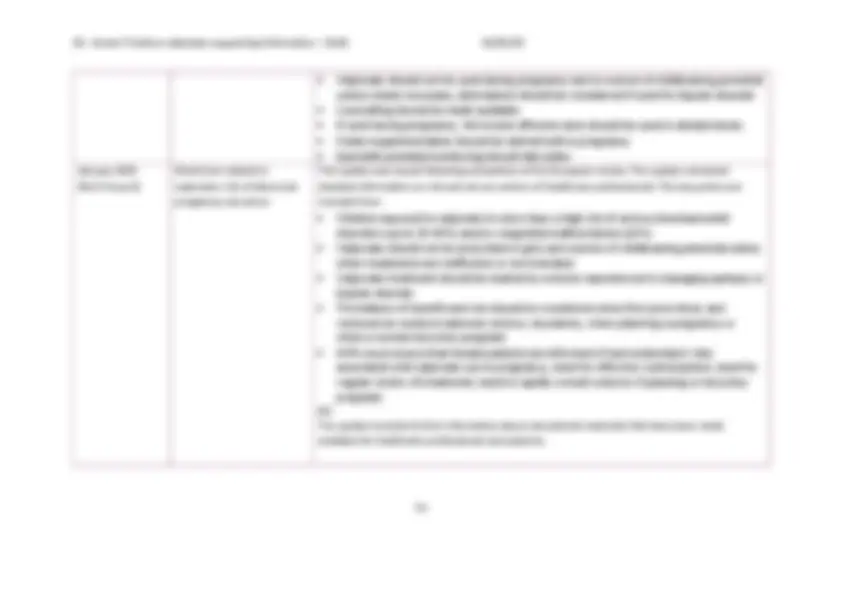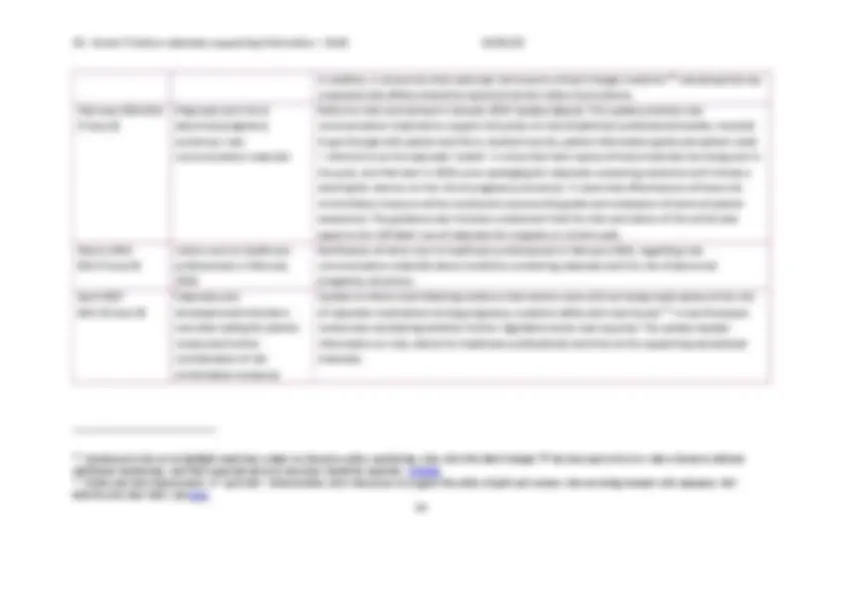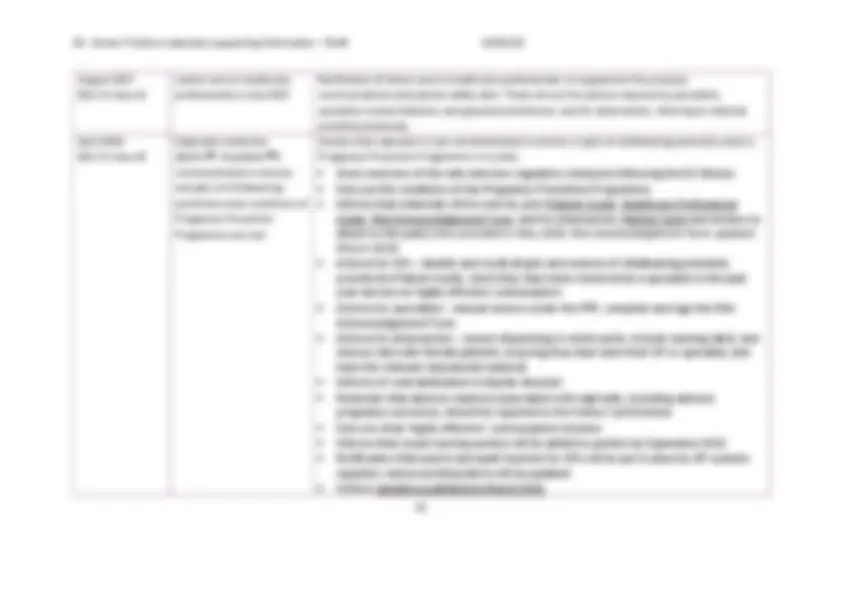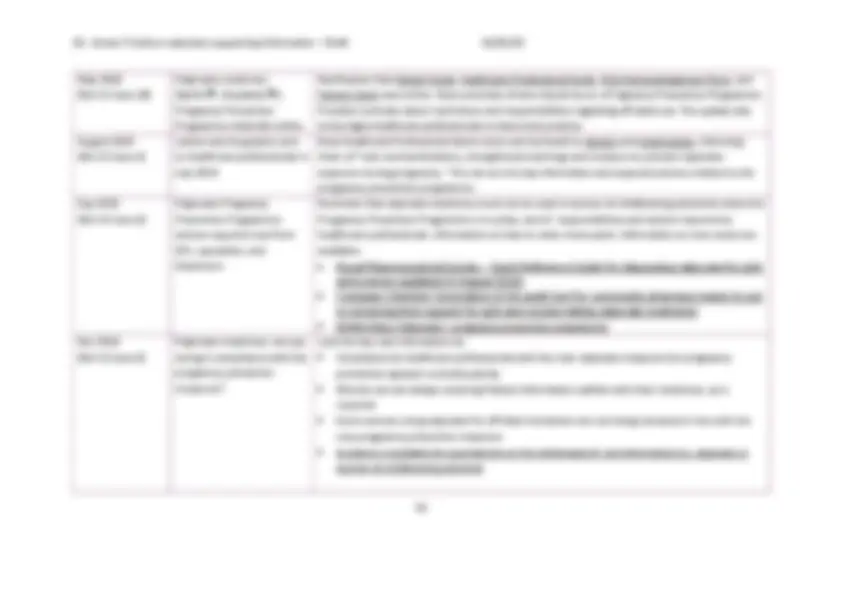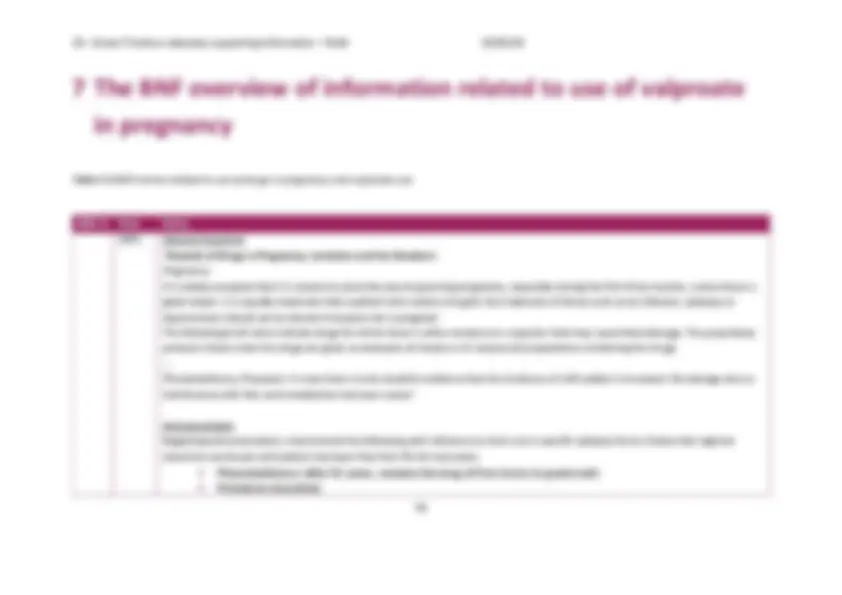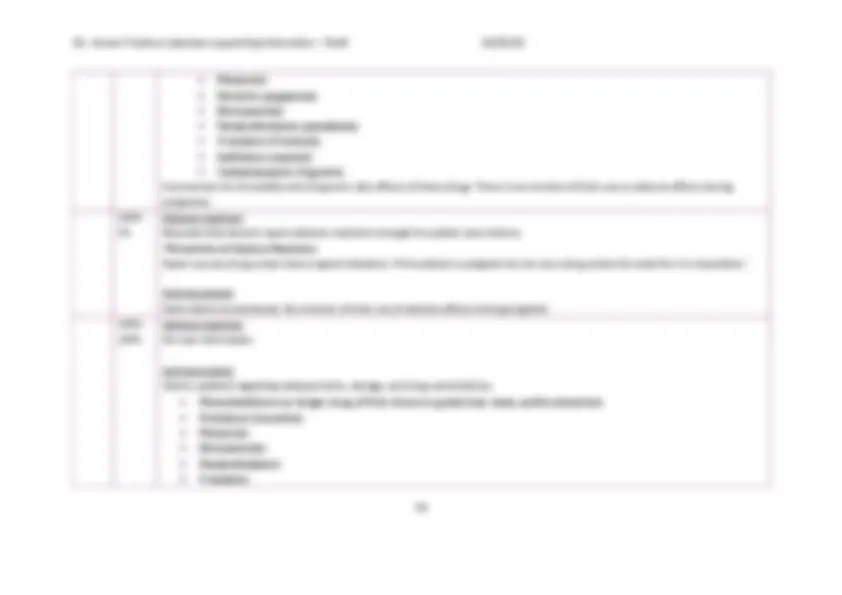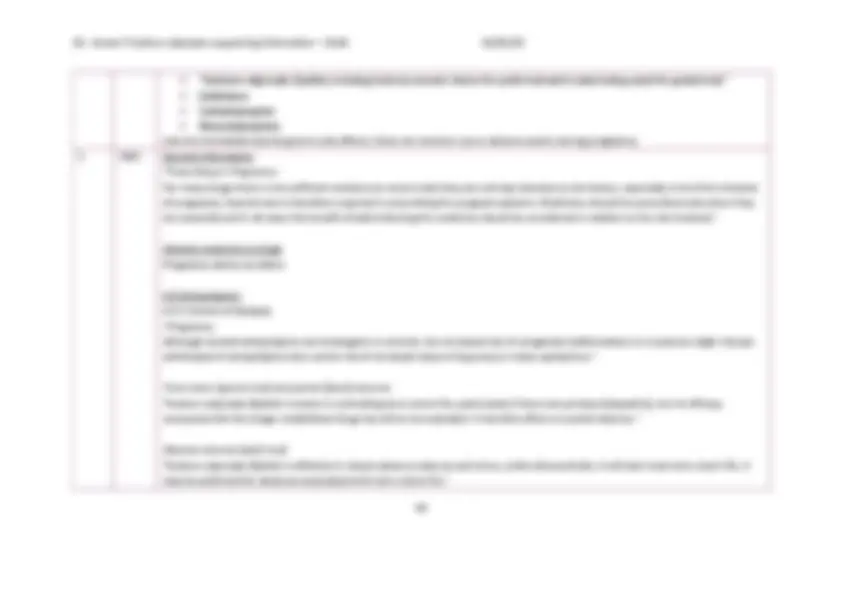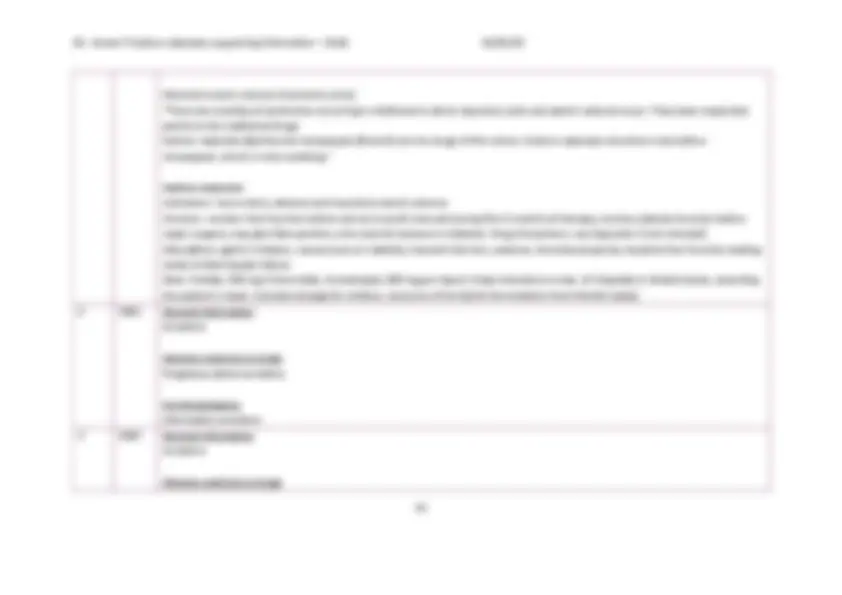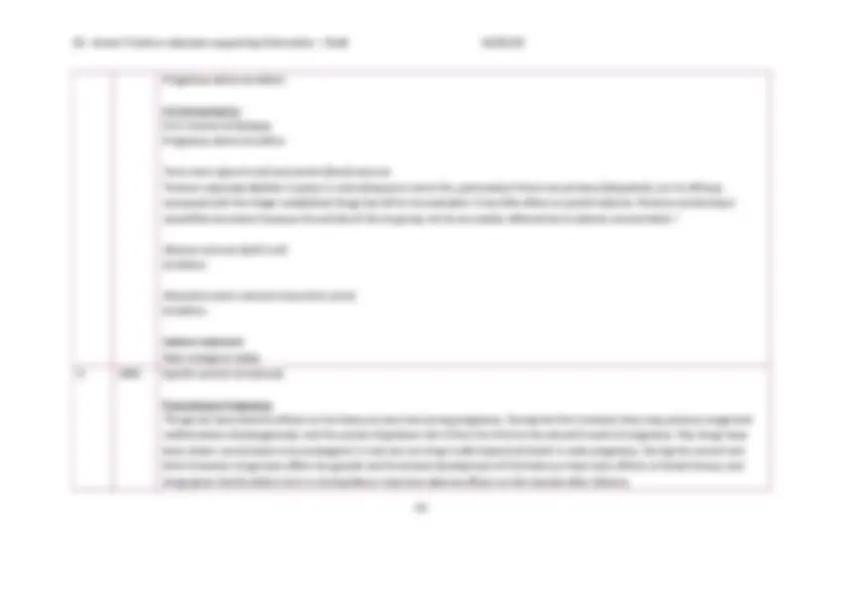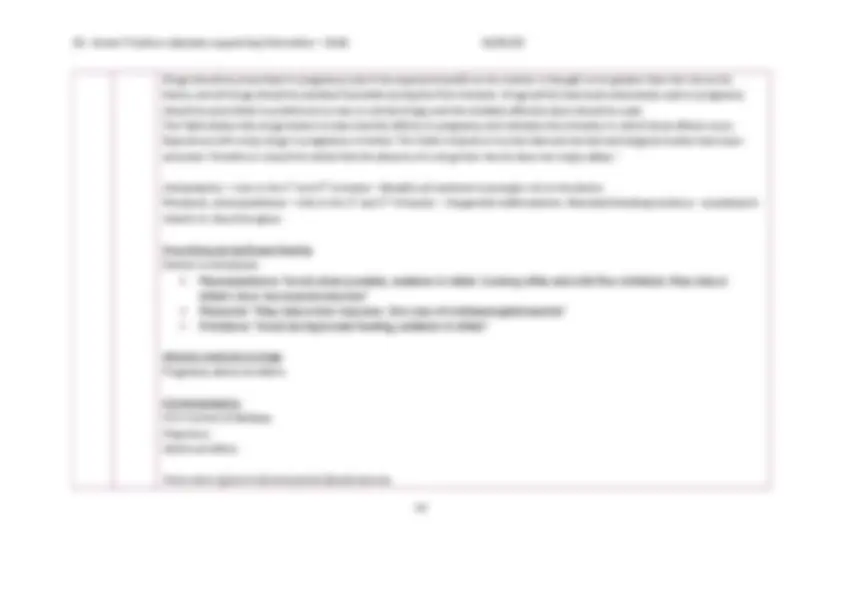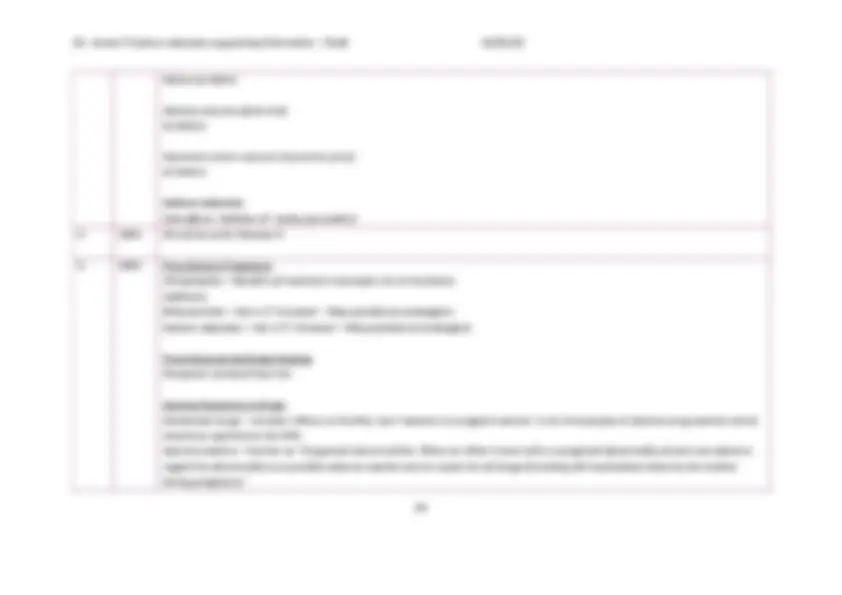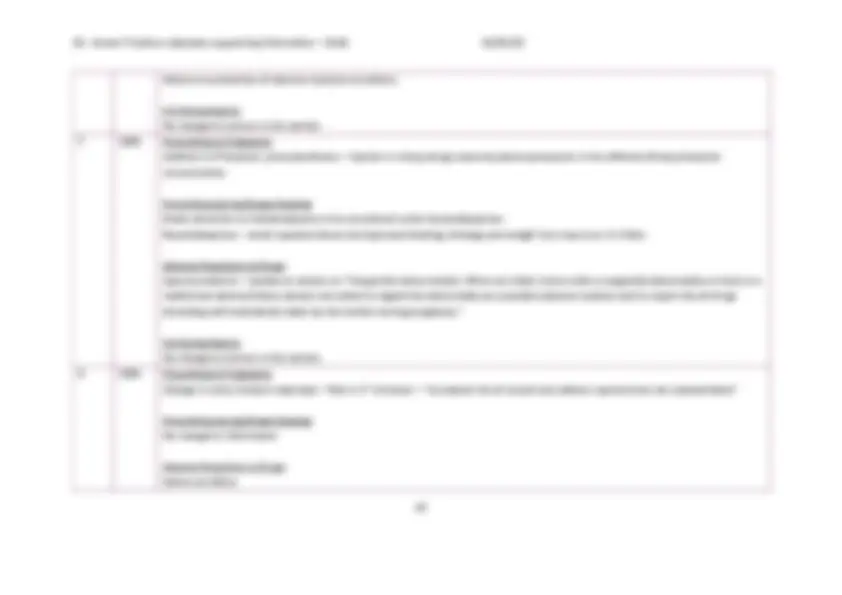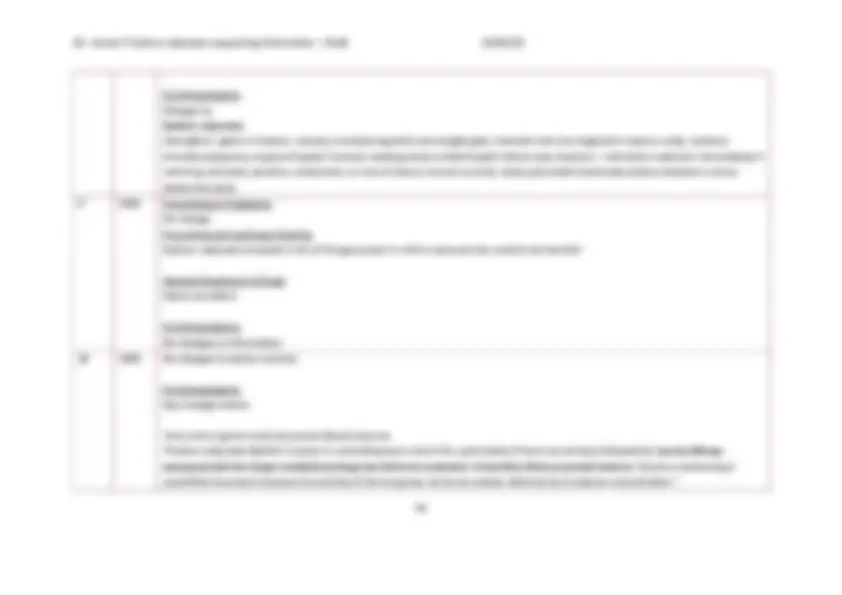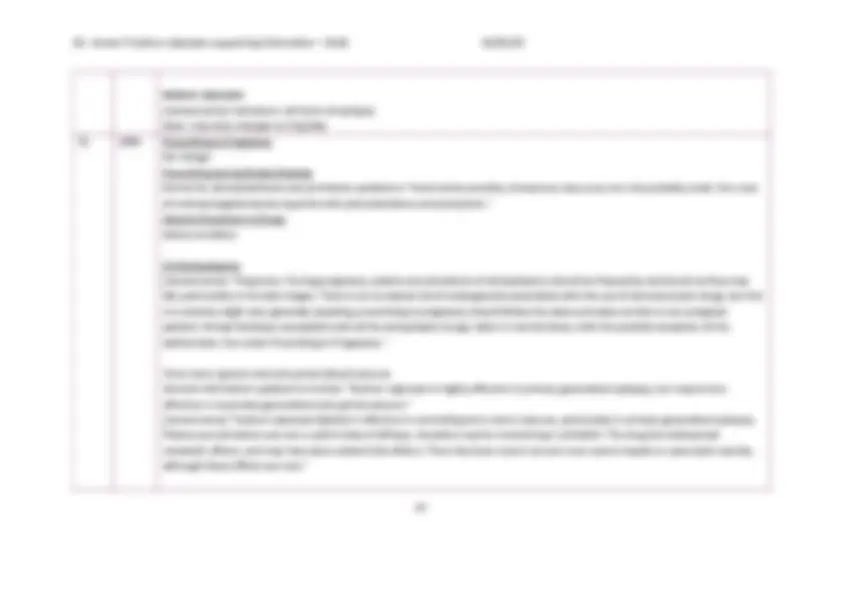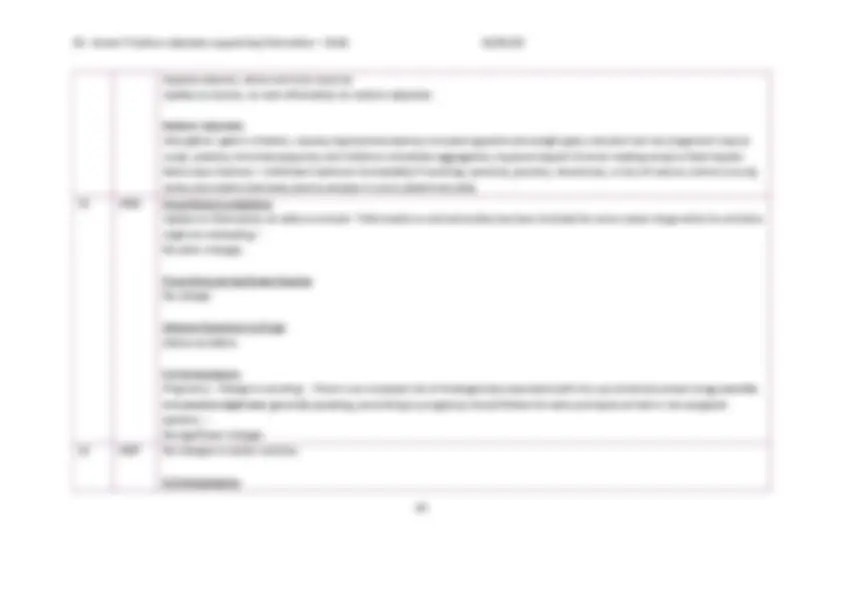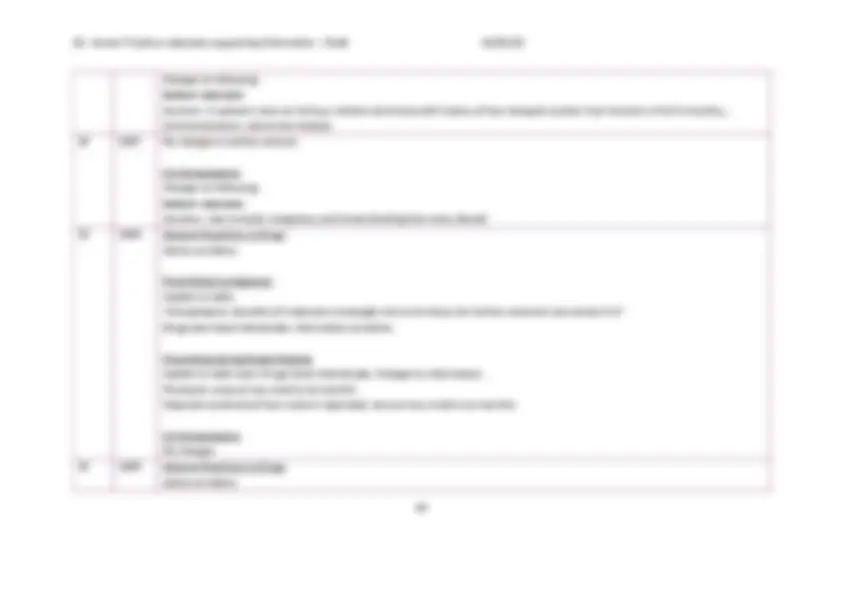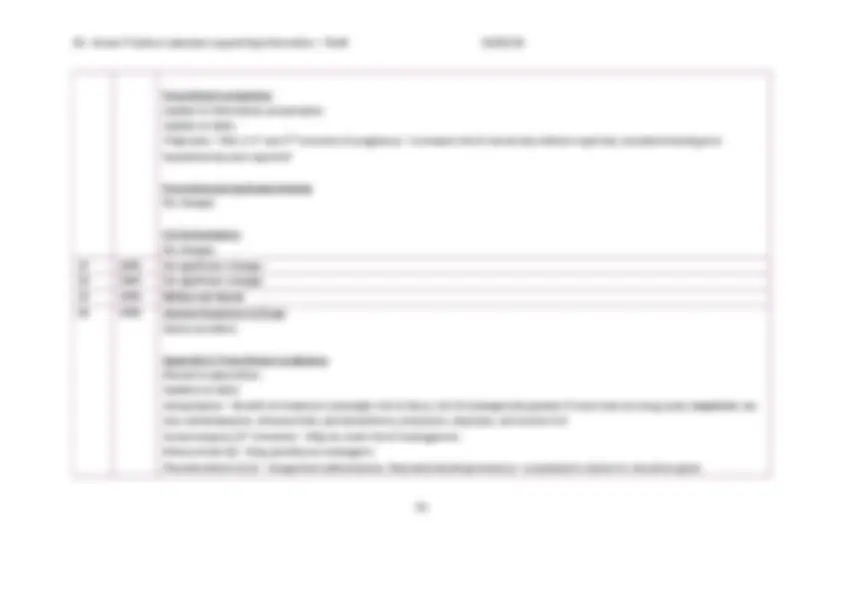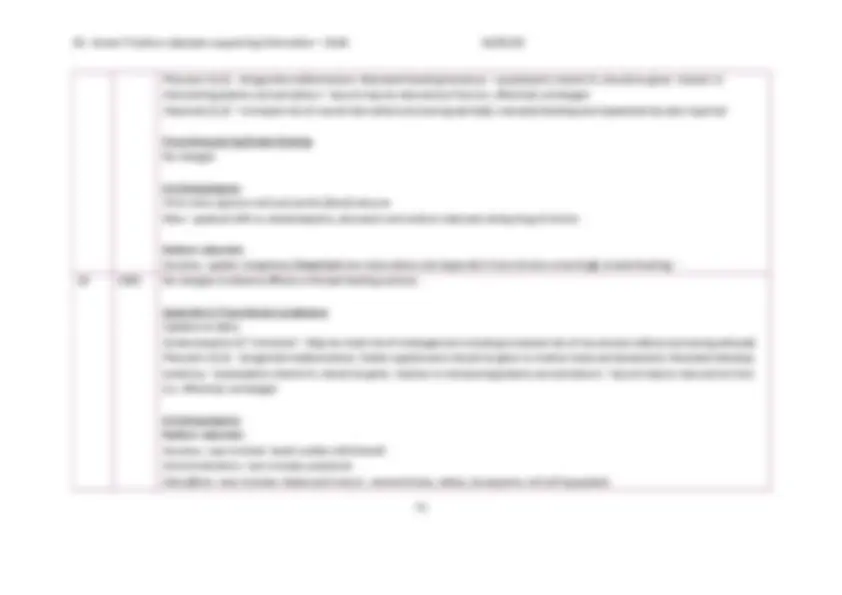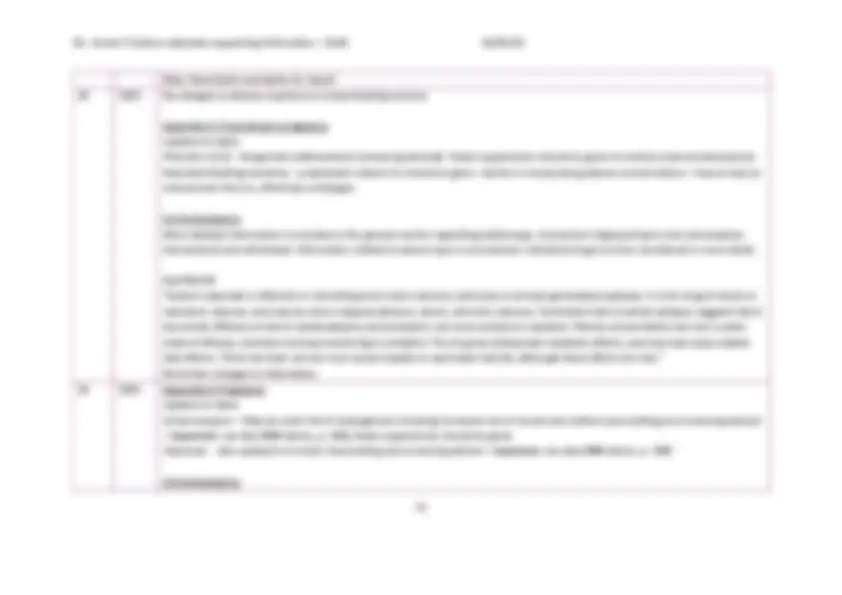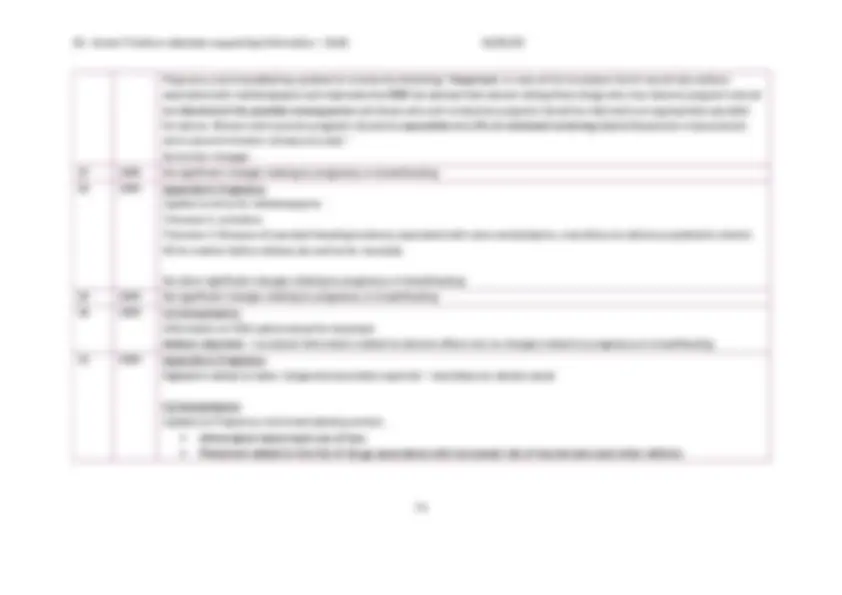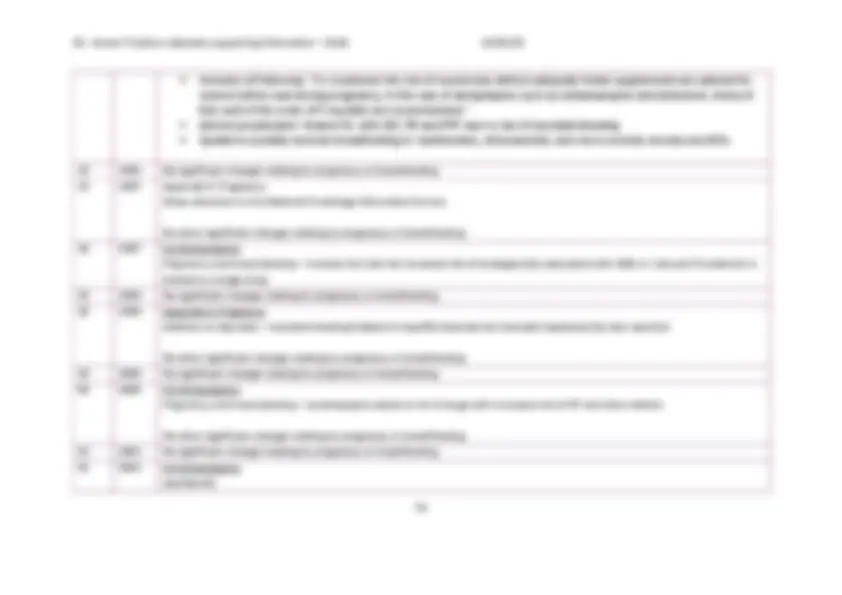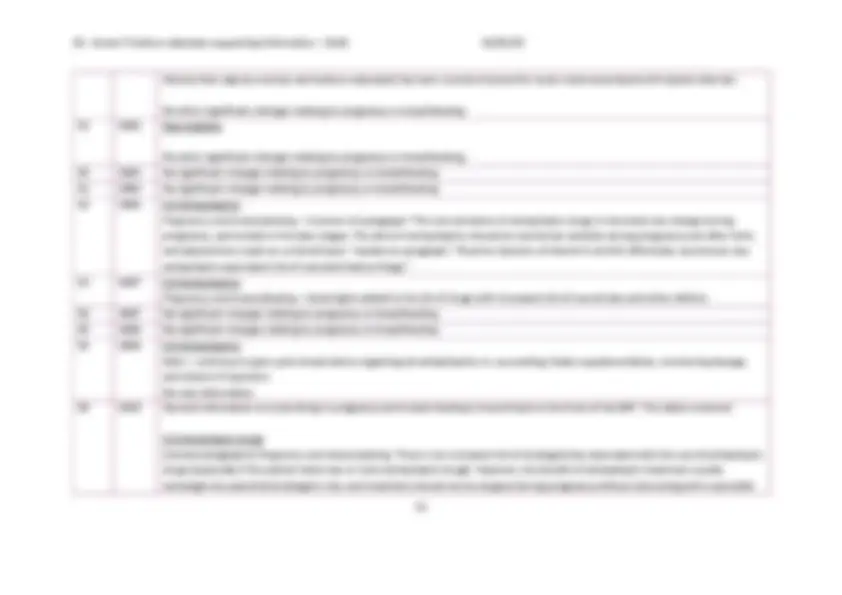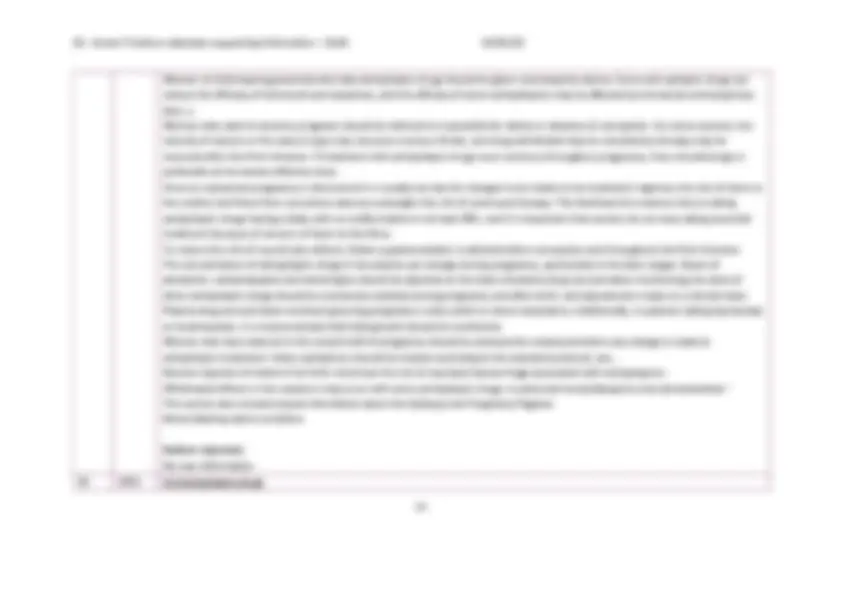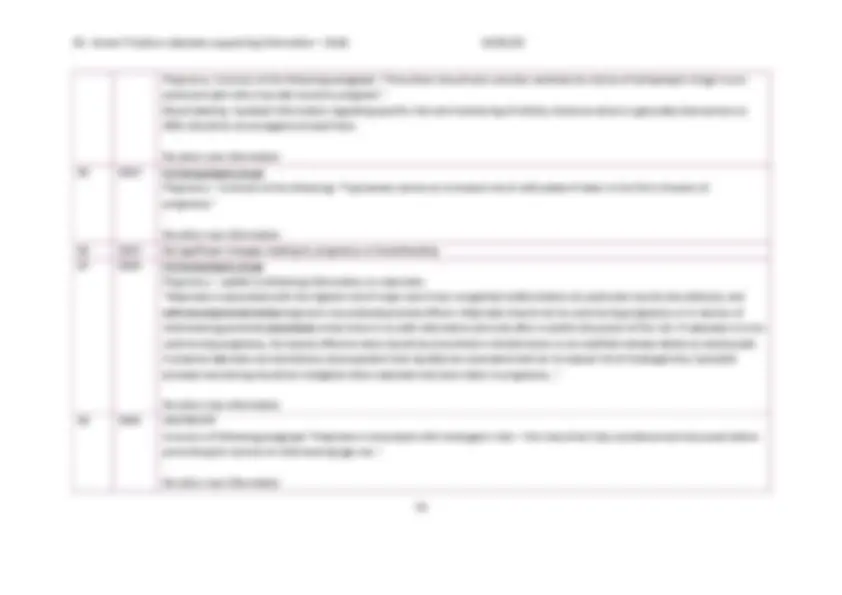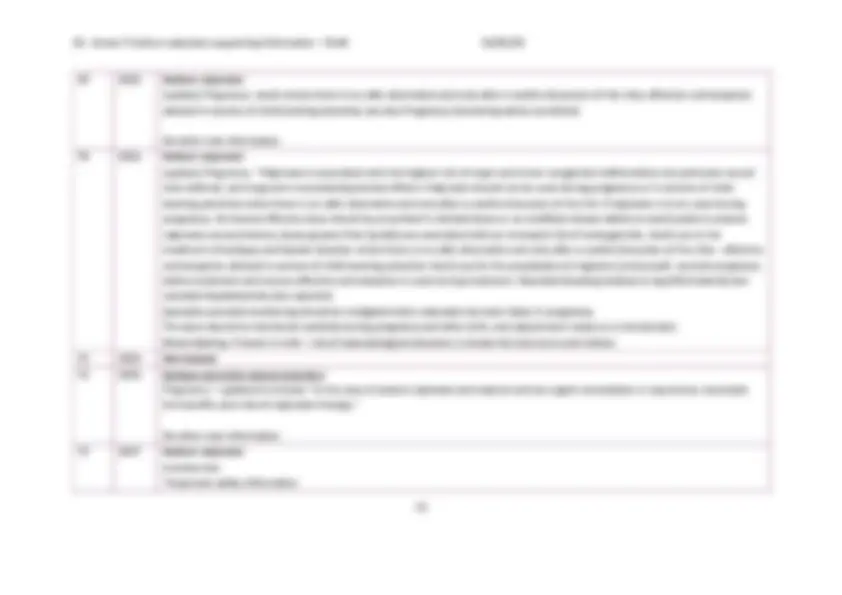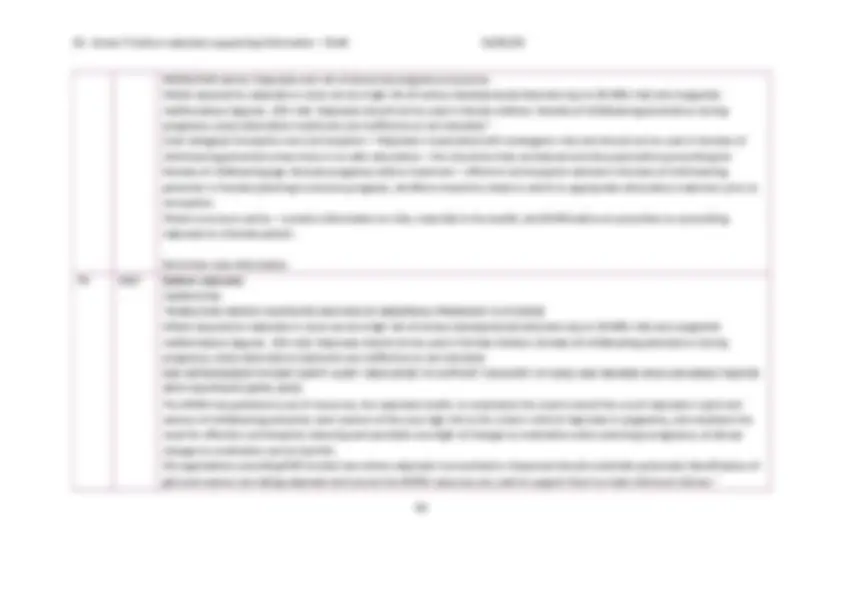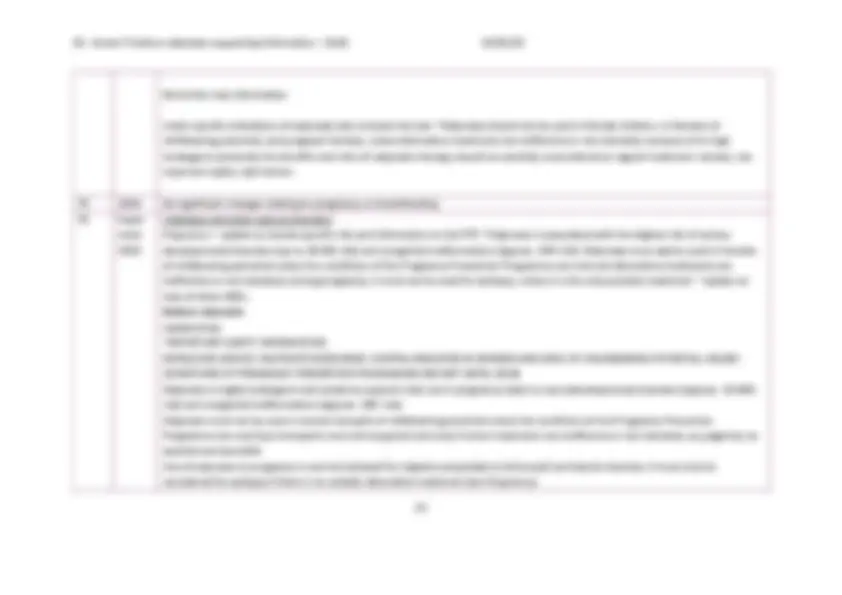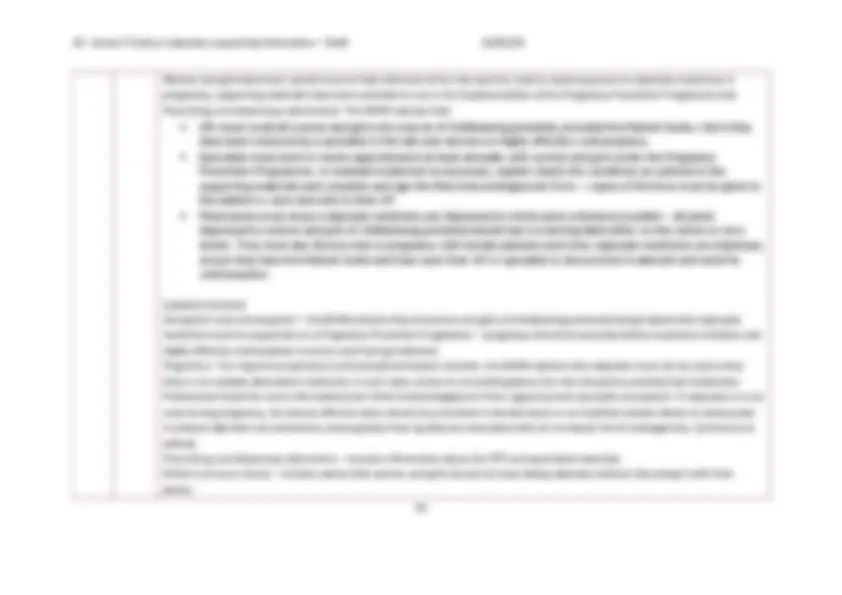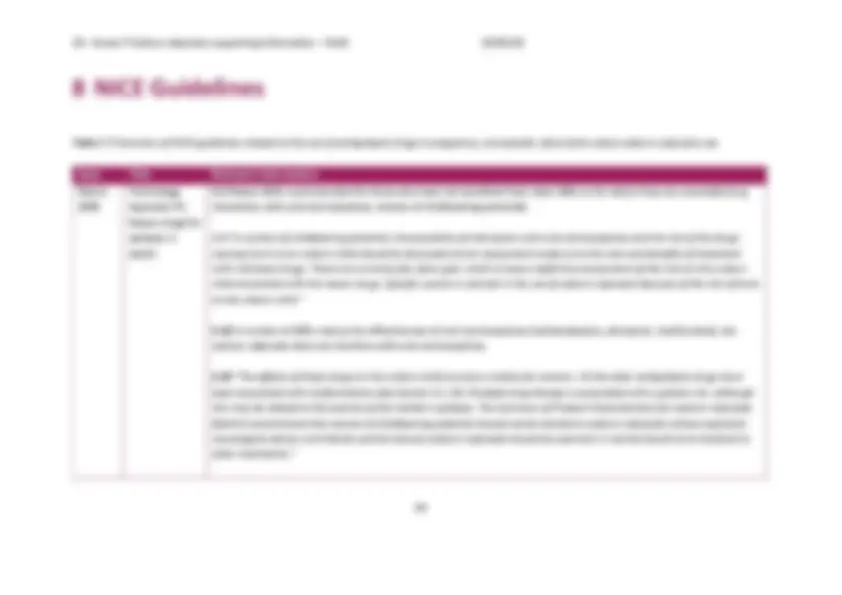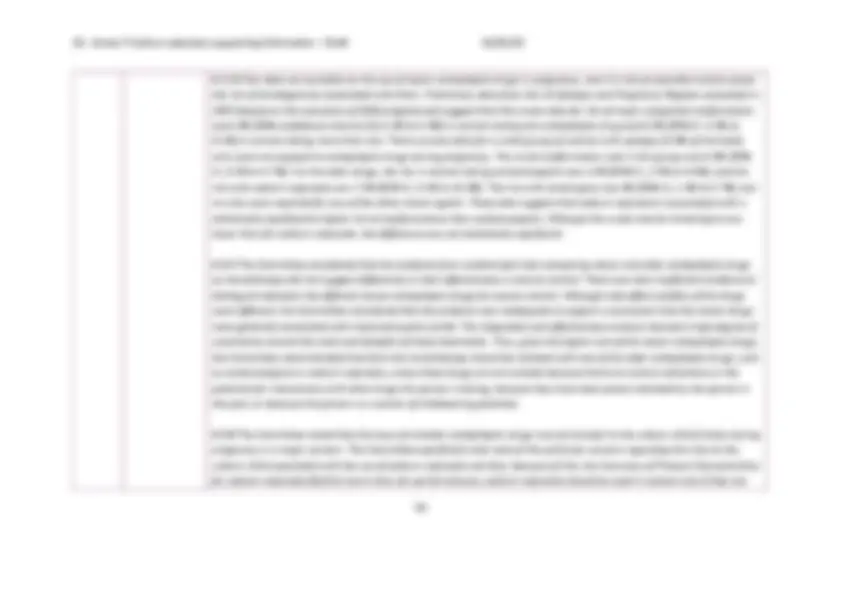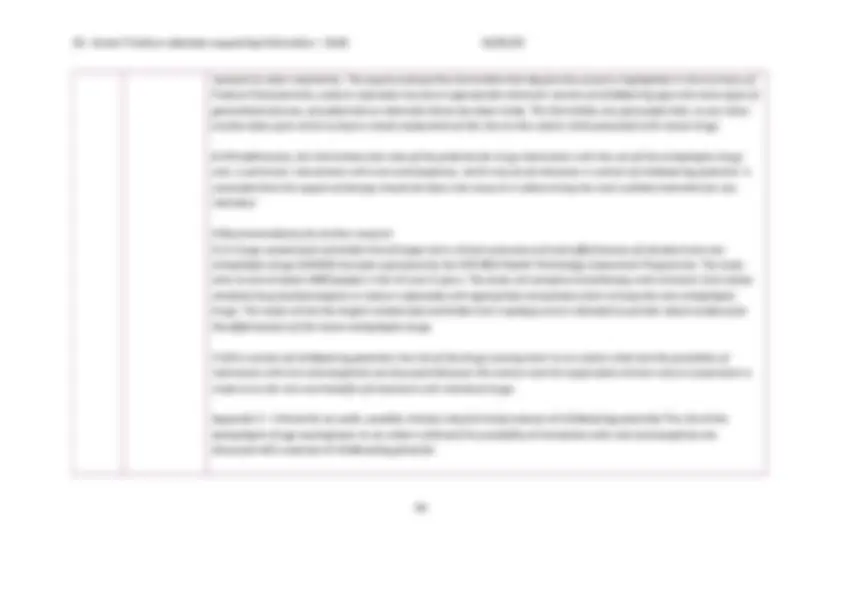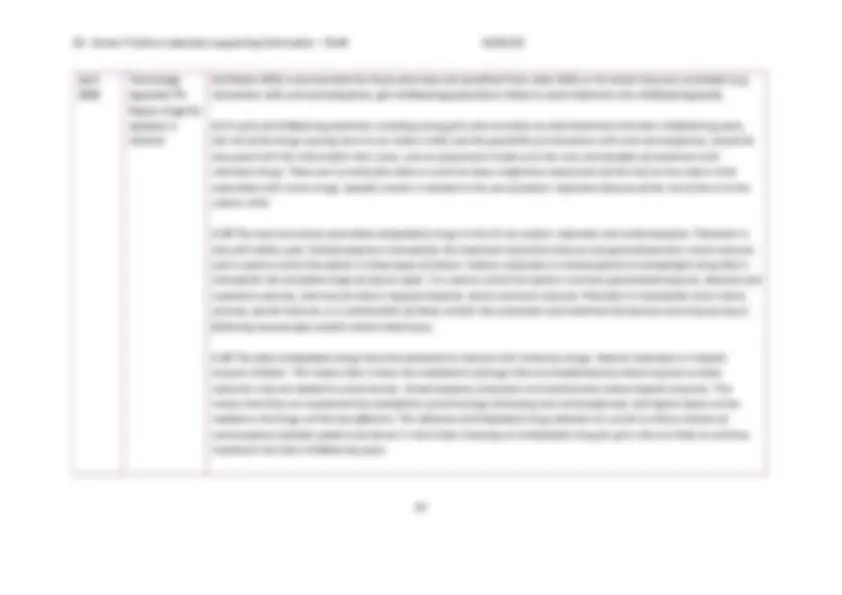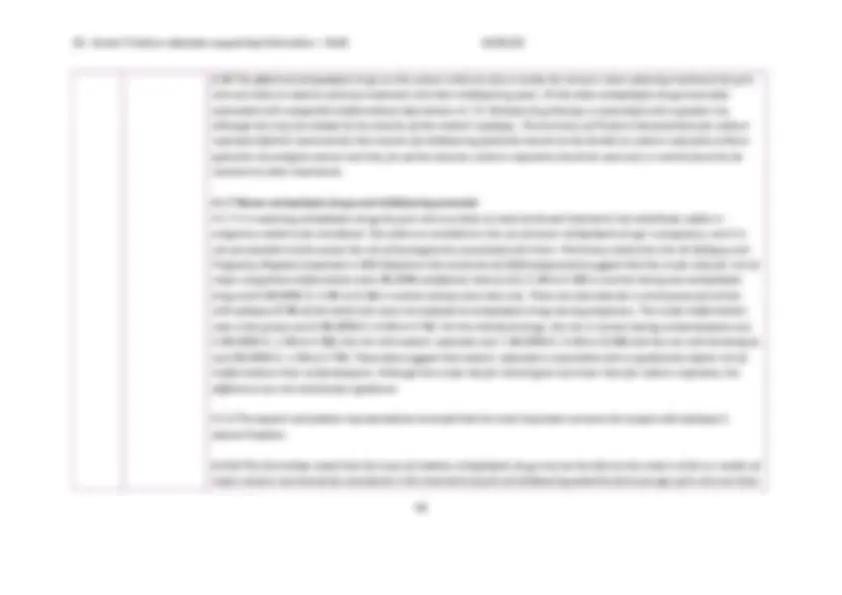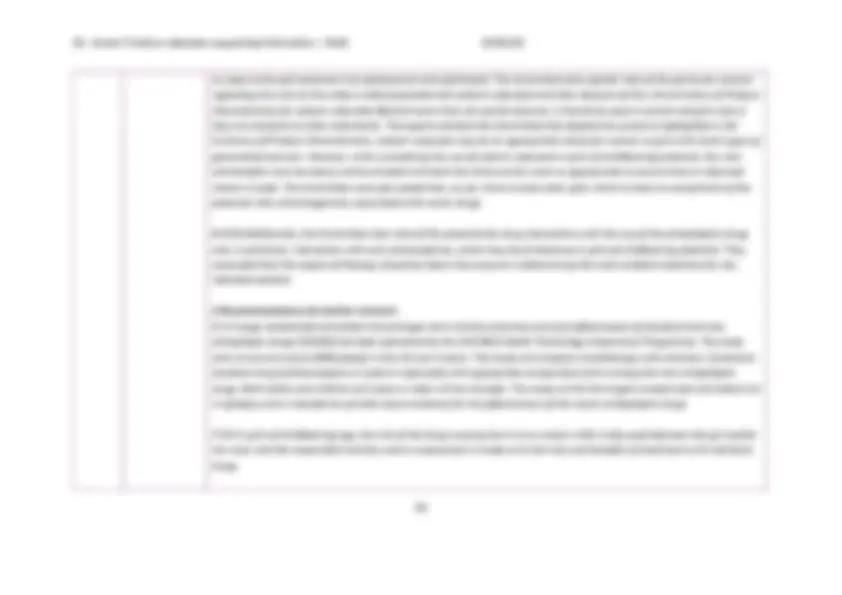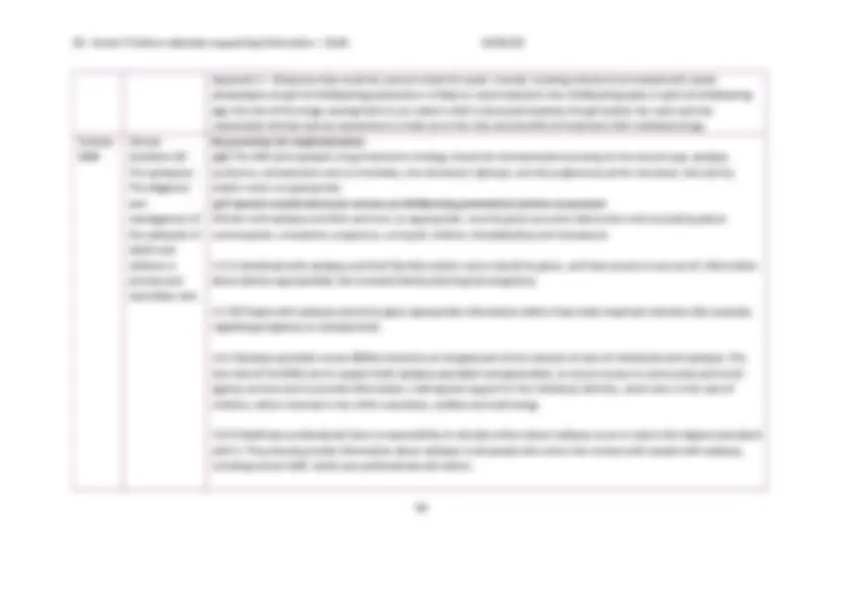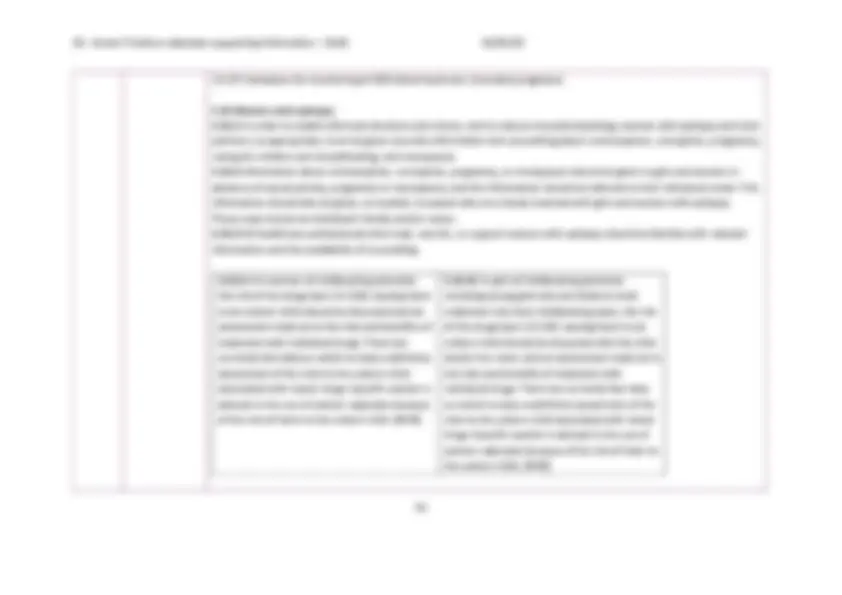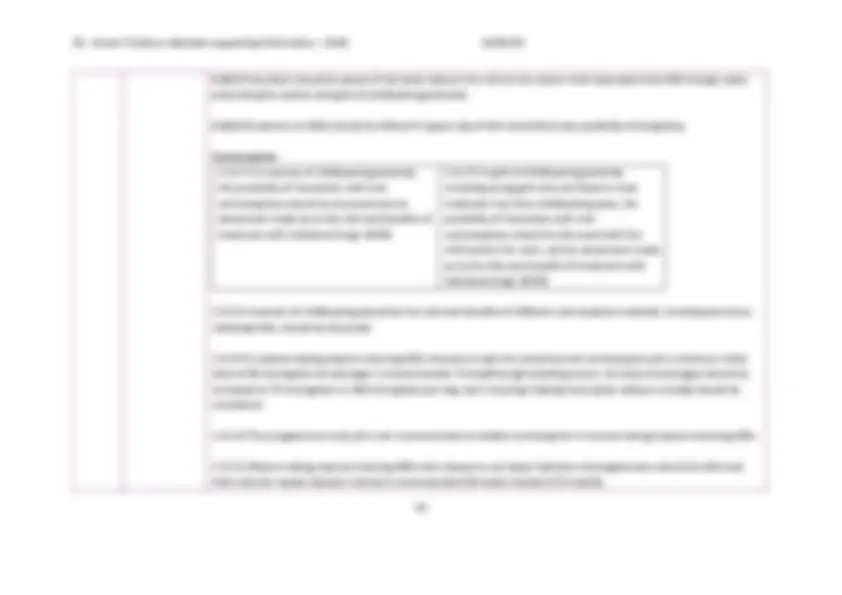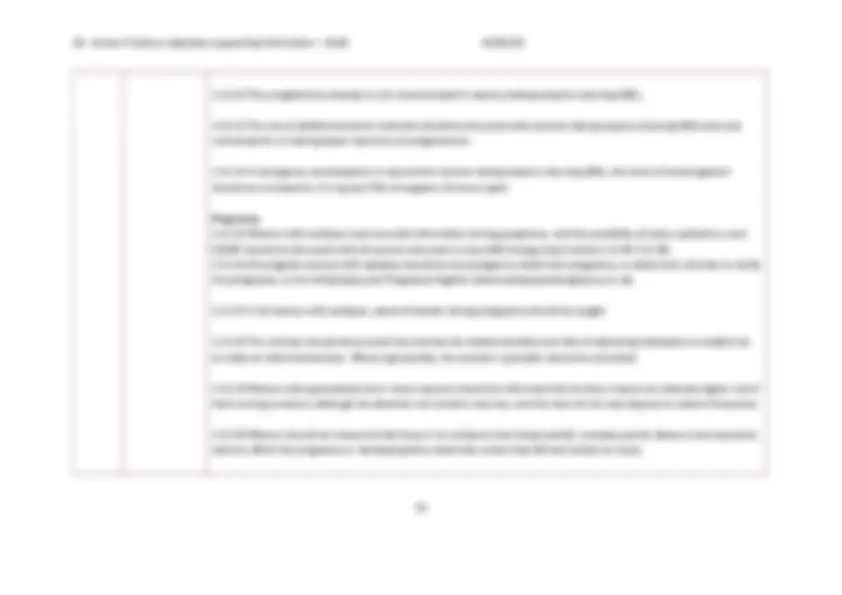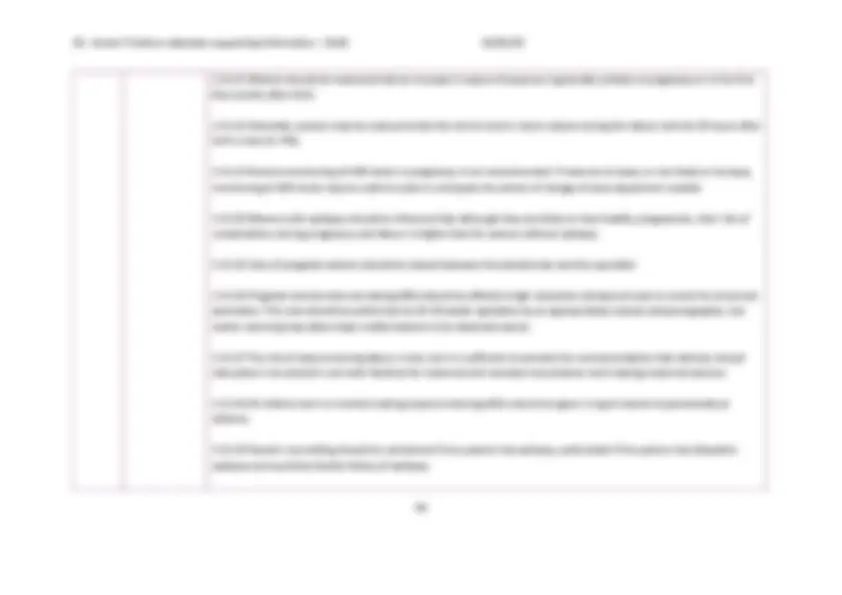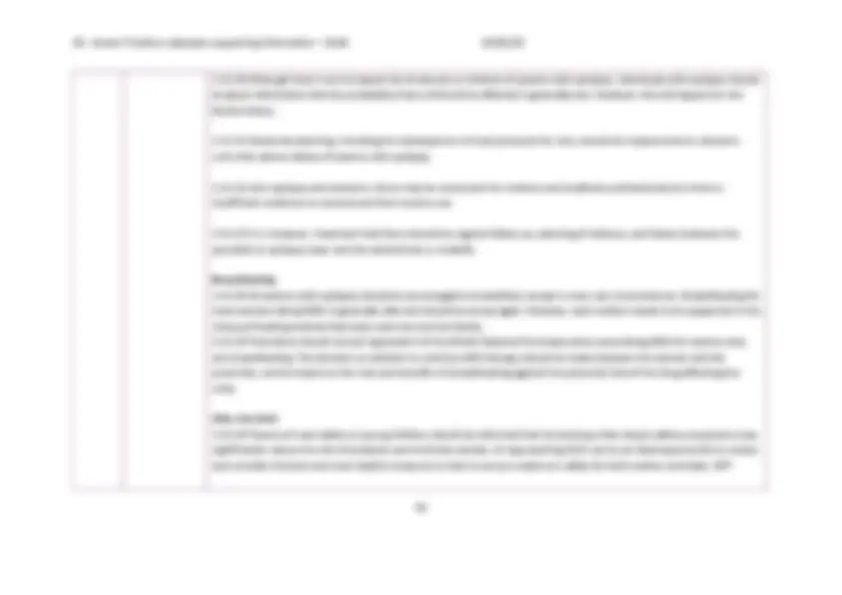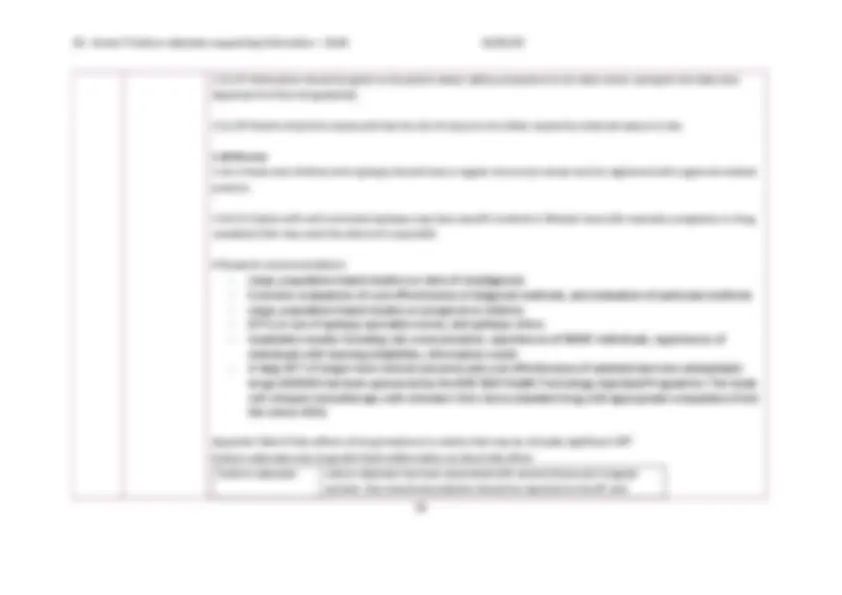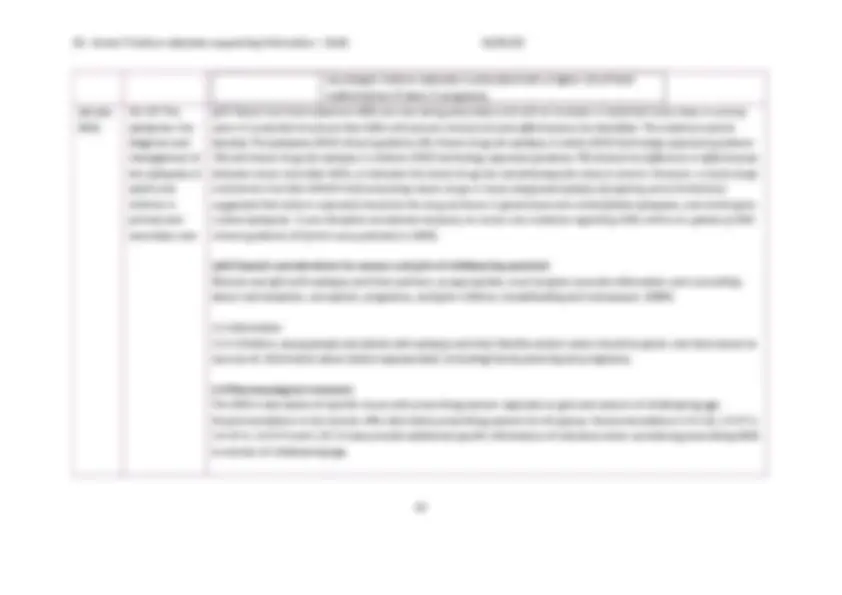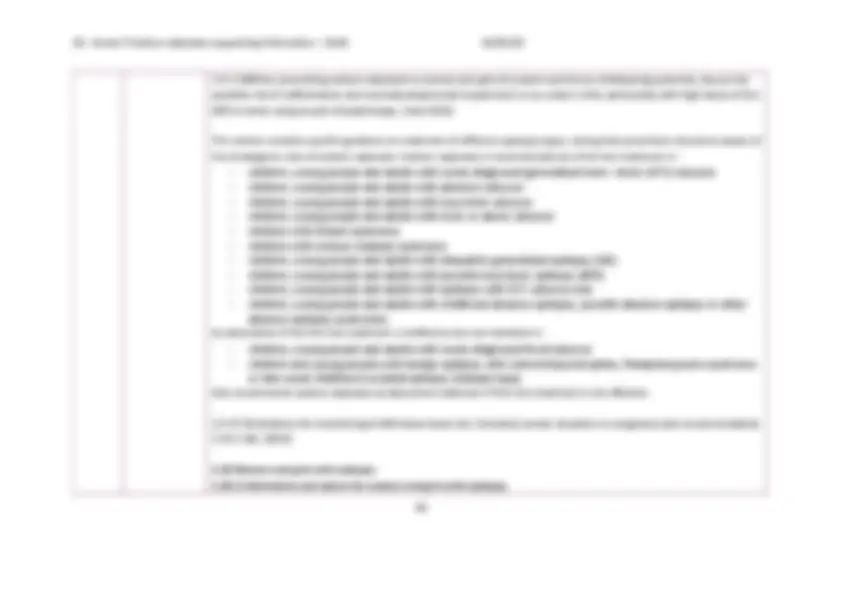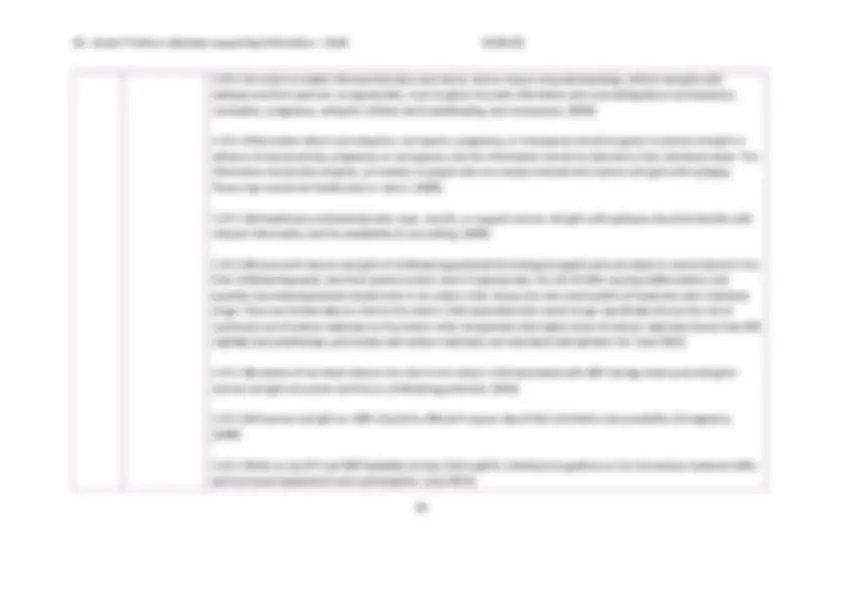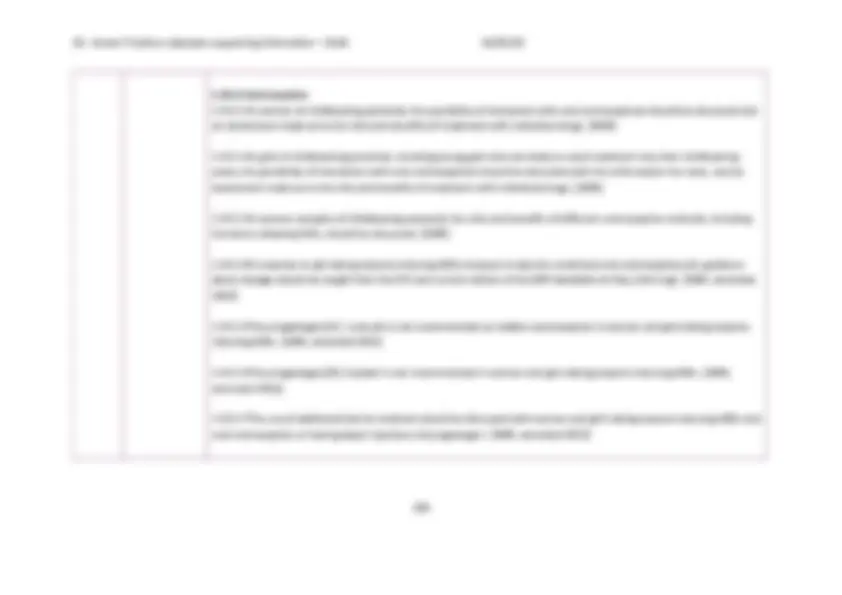Download Sodium Valproate: Risks and Guidelines for Use during Pregnancy and more Study notes Neurology in PDF only on Docsity!
Annex F: Sodium valproate Supporting
Information
- 1 Sodium valproate Contents
- Pharmacology
- History
- Licensing in the UK
- ‘Off-label’ use of sodium valproate
- Prevalence of valproate use in the UK
- 2 Estimates of numbers affected by in-utero exposure to sodium valproate
- 3 Emerging data on the risk of valproate use during pregnancy
- Product Characteristics (SmPC) and the Patient Information Leaflets in the UK 4 Key information changes related to use of Epilim in pregnancy in the Datasheet/Summary of
- 5 Information on dosage
- 6 Warnings from the Regulator in the UK
- 7 The BNF overview of information related to use of valproate in pregnancy
- 8 NICE Guidelines
- 9 Warnings from other sources
- Drug Therapeutics Bulletin
- Manufacturer warnings
- Professional Bodies and Regulators
- 10 Parliamentary reviews on epilepsy
- 11 Hansard references to epilepsy or sodium valproate
1 Sodium valproate
Pharmacology
- Valproic acid is also known as dipropylacetic acid (DPA), 2-propyl-pentanoic acid, or 2- propylvaleric acid. There are two salts of valproic acid which are used therapeutically, of which the sodium salt (sodium valproate) is more commonly used than the magnesium salt (magnesium valproate) which is marketed in South and Central America. 1 A stable compound of sodium valproate and valproic acid containing a 1: molar amount of each is known as divalproex sodium, or valproate semisodium.
- Some examples of these variants are below. Modified forms such as prolonged release and gastro-resistant forms are also available. - Sodium valproate – Epilim, Episenta - Valproic acid – Convulex - Divalproex sodium / Valproate semisodium – Belvo, Depakote, Epival - Other combination of sodium valproate and valproic acid - Epilim Chrono
- The exact mechanism of action for sodium valproate in management of seizures, psychiatric treatment, and migraine prophylaxis is not completely understood.^2
History
- Valproic acid was first synthesised in 1882 by Burton, and was used as a laboratory solvent. The discovery of its anticonvulsant properties was accidental; used as a solvent in testing other potential anticonvulsants, the scientists Eymard, Meunier and Meunier found that the valproic acid itself had an anticonvulsant effect. They presented these findings at a meeting in 1962, and published their findings the following year.^3 A French patent was obtained by Berthier laboratories in 1969. (^1) Simon, D and Penry, JK. Sodium Di‐ N ‐Propylacetate (DPA) in the Treatment of Epilepsy: A Review. Epilepsia 1975: 16: 549-573. doi: 10.1111/j.1528-1157.1975.tb04738.x (^2) https://www.drugbank.ca/drugs/DB (^3) ‘The discovery of valproate’ In Löscher, W. Valproate. Birkhäuser Basel doi: 10.1007/978- 3 - 0348 - 8759 - 5_
France instead.^9 Moreover, a subsequent note by the Medicines Commission draws attention to this data being collected from a patient sample which differed from the majority of patients in the UK “ in its genetic composition, dietary intake, and other drugs administered concomitantly.”^10
- An application for a full product licence was submitted in September 1973 along with data from animal studies.^11 This was considered by DHSS, and after discussion of conditions of licencing with Reckitt-Labaz, a full product licence was granted in October 19 7 4, backdated to August 1973.^12
- Valproate, in the form of valproic acid or semisodium valproate, was licensed for use in 2001 for the treatment of manic episodes associated with bipolar disorder.
‘Off-label’ use of sodium valproate
Psychiatric indications
- In addition to the licensed use of semisodium valproate for acute manic episodes, it has been used for other psychiatric indications including: augmentation of antidepressant drug treatment and prophylaxis to reduce episodes of bipolar or unipolar disorder.^13 The most recent Cochrane Reviews on the use of sodium valproate state: - Acute mania (licensed use): valproate is an effective antimaniac treatment^14 - Maintenance treatment of bipolar disorder: There is limited evidence which supports the efficacy of valproate in the long‐term treatment of bipolar disorder. Clinicians and patients should consider the acceptability and (^9) Reported in: US Department of Health, Education and Welfare. Workshop on Antiepileptic Drug Development, April 15 1977, Arlington, Virginia. (^10) MHRA written evidence to the Review - MC 76/112A ‘A Note on Epilim – Sodium Valproate’ 1976 (^11) Sanofi written evidence to the Review (^12) MHRA written evidence to the Review – Minutes of the CSM, March and September 1973 (^13) RCPsych ‘Withdrawal of, and alternatives to, valproate-containing medicines in girls and women of childbearing potential who have a psychiatric illness’ 2018 (^14) Jochim, J et al. Valproate for acute mania. Cochrane Systematic Review - Intervention 07 October 2019 doi: 10.1002/14651858.CD004052.pub
tolerability profile when choosing between lithium and valproate as long‐term treatment for bipolar disorder.^15
- Schizophrenia: there is limited evidence (from open randomised control trials) that the augmentation of antipsychotics with valproate may be effective for overall clinical response, and for managing excitement and aggression. Valproate was associated with a number of adverse events. Further randomised blinded studies are necessary before any clear recommendation can be made.^16
- Aggression: Insufficient evidence on the efficacy of antiepileptic drugs in reducing aggression was found to draw a firm conclusion.^17
- Alcohol dependence: There is insufficient good quality evidence to support the clinical use of anticonvulsants to treat alcohol dependence.^18
- Agitation in dementia: Valproate preparations are probably ineffective in treating agitation in people with dementia, and are associated with a higher rate of adverse effects. Valproate therapy cannot be recommended for this use.^19 Migraine prophylaxis
- Sodium valproate has also been used in the UK for migraine prophylaxis. The ‘off- label’ use of sodium valproate for migraine was first included in the BNF in 2001. Early small-scale studies demonstrated that sodium valproate was effective in migraine (^15) Cipriani, A et al. Valproic acid, valproate and divalproex in the maintenance treatment of bipolar disorder Cochrane Systematic Review - Intervention 17 October 2013 doi: 10.1002/14651858.CD003196.pub (^16) Wang, Y et al. Valproate for schizophrenia. Cochrane Systematic Review - Intervention 24 November 2016 doi: 10.1002/14651858.CD004028.pub (^17) Huband, N et al. Antiepileptics for aggression and associated impulsivity. Cochrane Systematic Review - Intervention 17 February 2010 doi: 10.1002/14651858.CD003499.pub (^18) Pani, PP et al. Anticonvulsants for alcohol dependence. Cochrane Systematic Review - Intervention 13 February 2014 doi: 10.1002/14651858.CD008544.pub (^19) Baillon, SF et al. Valproate preparations for agitation in dementia. Cochrane Systematic Review - Intervention 05 October 2018 doi: 10.1002/14651858.CD003945.pub
- A consensus meeting of the International Association for the Study of Pain (IASP) suggested that valproic acid should only be considered as a third-line medication.^28 A Cochrane Review in 2011 concluded that there was “ too few data for pooled analysis of efficacy or harm, or to have confidence in the results of the individual studies. There is insufficient evidence to support the use of valproic acid or sodium valproate as a first-line treatment for neuropathic pain.”^29 In the same year, a NICE consultation on neuropathic pain found that evidence on the efficacy of sodium valproate was insufficient.^30 Sodium valproate does continue to form part of neuropathic pain protocols in specialist settings, with due warnings about the Pregnancy Prevention Programme.^31
Prevalence of valproate use in the UK
- Carbamazepine and valproates were among the most commonly used medications for epilepsy in the UK throughout 1993– 2008.^32 During this period, use of phenytoin and barbiturates decreased, and lamotrigine and levetiracetam increased. Newer AEDs were more frequently prescribed to younger participants, especially women aged 15– 44 years, while older adults were more likely to be prescribed longer established AEDs.^33 Between 1996 and 2016, prescribing of lamotrigine and levetiracetam continued to increase in the UK and Ireland, and valproate and carbamazepine use declined.^34 (^28) Dworkin, RH et al. Pharmacologic management of neuropathic pain: Evidence-based recommendations. PAIN 2007: 132(3): 237-251 doi: 10.1016/j.pain.2007.08. (^29) Gill, D et al. Valproic acid and sodium valproate for neuropathic pain and fibromyalgia in adults. Cochrane Database of Systematic Reviews 2011: 10 doi: 10.1002/14651858.CD009183.pub (^30) NICE. Neuropathic pain: The pharmacological management of neuropathic pain in adults in non-specialist settings. NICE clinical guideline Draft for consultation, September 2011. Available online here. (^31) For example see resources from Salford Royal https://www.srft.nhs.uk/EasysiteWeb/getresource.axd?AssetID=17102&type=full&servicetype=Inline, and South & West Devon Formulary and Referral https://southwest.devonformularyguidance.nhs.uk/formulary/chapters/4.-central-nervous- system/neuropathic-pain (^32) Nicholas, J. M., et al. (2012). "Trends in antiepileptic drug utilisation in UK primary care 1993–2008: Cohort study using the General Practice Research Database." Seizure 21 (6): 466- 470 ; Man, S.-L., et al. (2012). "Antiepileptic Drugs during Pregnancy in Primary Care: A UK Population Based Study." PLoS One 7 (12): e52339. (^33) i bid. (^34) Kinney, M. O., et al. (2018). "Changing antiepilepsy drug-prescribing trends in women with epilepsy in the UK and Ireland and the impact on major congenital malformations." Journal of Neurology, Neurosurgery
- Data provided by Sanofi (manufacturers of Epilim and Depakote) and current to August 2018 suggest that valproate use has continued to decline (for both valproate and bipolar disorder). The share of all valproate-based medicines in the epilepsy market has reduced over the past 5 years from 12.1% to 9.1%. The number of women of childbearing potential taking Epilim has reduced from 17,172 to 15,633, and female children from 3,271 to 2,068 in the same period.^35
- An audit published in 2018 found that amongst those treated for bipolar disorder at 55 mental health Trusts in the UK, 24% of women aged younger than 50 years were prescribed valproate-containing medicines.^36 The Royal College of Psychiatrists stated that the prevalence of off-label use for other psychiatric treatments is unknown but estimates from other countries range between 14 – 35%.^37 Data provided by Sanofi show that the Depakote share of the bipolar market has declined from 4.1% to 3.5%. The number of women of childbearing potential taking Depakote has reduced by 38.8% from 8,177 to 5,002 over this period^38.
- These figures are supported by data from the Clinical Practice Research Datalink, which suggested that approximately 35,000 women per year aged 14 to 45 had a prescription for sodium valproate between 2010 and 2012, the majority for epilepsy. Of these, at least 375 per year had a prescription for sodium valproate while pregnant.^39
- NHS prescribing data for sodium valproate (including valproic acid and semisodium valproate) for the period January - March 2018 and October – December 2019 continues to show a reduction in valproate prescribing in female patients 45 years and under.^40 & Psychiatry 89 (12): 1320.; Pickrell, W. O., et al. (2014). "Trends in the first antiepileptic drug prescribed for epilepsy between 2000 and 2010." Seizure 23 (1): 77-80.; Man, S.-L., et al. (2012). "Antiepileptic Drugs during Pregnancy in Primary Care: A UK Population Based Study." PLoS One 7 (12): e52339. (^35) Sanofi written evidence to the Review (^36) Paton, C et al. A UK clinical audit addressing the quality of prescribing of sodium valproate for bipolar disorder in women of childbearing age. BMJ Open 2018: 8(4) doi: 10.1136/bmjopen- 2017 - 020450 (^37) Royal College of Psychiatrists written evidence to the Review (^38) Sanofi written evidence to the Review (^39) Medicines related to valproate: risk of abnormal pregnancy outcomes. Drug Safety Update 8(6) January 2015 (^40) Prescribing for Sodium Valproate. NHS BSA Prescription Data. https://www.nhsbsa.nhs.uk/prescription- data/prescribing-data/sodium-valproate
2 Estimates of numbers affected by in-
utero exposure to sodium valproate
Estimates in the UK
- There has been no official estimate of the number of children exposed to sodium valproate in utero since it was licensed in 1973 , and information has not been collected centrally.^47 A number of estimates have been shared with the review, which are summarised below: Table F. 1 Estimates of numbers affected by valproate exposure in utero Source Assumptions Estimate INFACT^48 • Using Summary of Live Birth Statistics from the Office of National Statistics (ONS) for England and Wales from 1996- 2011 and Man et al (2012)^49.
- Using estimate of 40% with cognitive and minor physical effects, and 10% with major congenital malformations
- Projected to period 1973- 2011 1973 - 2011
- 33,798 exposed
- 13,510 – 20, significantly affected FACSaware^50 • Using estimate from Man et al^51 - Estimate pregnancies in 2009, and extrapolated to period 1994 – 2013 - Estimate 35-40% significant physical or cognitive effect 1994 – 2013 - 24,000 exposed - 9,600 affected by significant physical or cognitive effect (^47) Hansard 9th (^) March 2019. Pregnancy: Sodium Valproate. Written question 131831. Link here. (^48) INFACT written evidence to the Review (^49) Man et al. Antiepileptic Drugs during Pregnancy in Primary Care: A UK Population Based Study. PLOS ONE 2012: 7 , e (^50) FACSAware written evidence to the Review. (^51) Man et al. (2012) as above.
Bromley, Clayton- Smith and Turnpenny^52
- ‘Back of the envelope calculation’ using women taking valproate and birth rate - 20,000^53 affected (to date, both neurodevelopmental and physical effects)
- The figure of 20,000 appears to be the most often quoted, appearing in articles in the media,^54 and Parliament.^55 INFACT use this figure in calculating the resource required by individuals affected by valproate between 1973 and 2013 to total £181 billion.^56
Estimates in Ireland
- The group OACS Ireland used UK and international data, to estimate that there have been approximately 30 valproate pregnancies per year, or over 1,000 since 1983. Using the figures for risk above, this would equate to over 100 children with physical malformations, and approximately 400 with some form of neurodevelopmental delay.^57
- Health Service Executive Ireland formalised this estimate, using a number of data sources to estimate the prevalence of major congenital abnormalities and neurodevelopmental disorders arising from exposure of children to sodium valproate in the womb, between 1975 and 2015. This estimated that in this period, approximately 3,126 babies were exposed to valproate in utero. Using international data on the rates of congenital malformation and neurodevelopmental delay, they estimate that in this period, between 153 and 341 children will have a major (^52) OH Dr Bromley, Professor Clayton-Smith and Professor Turnpenny 26th (^) November 2018 (^53) This figure is also quoted in: J. Clayton-Smith et al. , Diagnosis and management of individuals with Fetal Valproate Spectrum Disorder; a consensus statement from the European Reference Network for Congenital Malformations and Intellectual Disability. Orphanet Journal of Rare Diseases 2019: 14 , 180. (^54) For example, see : S Boseley ‘Birth defect risks of sodium valproate 'known 40 years ago'’ The Guardian 26th September 2017; Z Adesina ‘Disabilities caused in babies by epilepsy drug a 'scandal'’ BBC Inside Out 22nd January 2018; S Petkar ‘PREGNANCY RISKS: What is sodium valproate, what are the side effects and what is foetal valproate syndrome? The Sun 22nd^ January 2018; K Lay ‘Birth defects from epilepsy drug sodium valproate could last generations’ The Times 23rd^ January 2018. (^55) Hansard 19th (^) October 2017. Valproate and Foetal Anticonvulsant Syndrome. Vol 629 Col 1065 http://bit.ly/2EiIvGw (^56) INFACT written evidence to the Review (^57) OACS Ireland written evidence to the Review
3 Emerging data on the risk of valproate
use during pregnancy
- At the time of licensing of sodium valproate, there were concerns about the teratogenicity of all antiepileptic drugs. The sodium valproate timeline (Annex C) gives an overview of several key papers and warnings published from the 1960s to date. Professors Clayton-Smith, Turnpenny and Wood, and Dr Bromley, provided the Review with an overview of the significant research which has contributed to the understanding of the risks of valproate use in pregnancy,^62 and the patient groups have shared a number of significant papers with the Review. In this Annex, we give a brief overview of this research.
Data on the teratogenicity of all anticonvulsant drugs
- Letters and papers published around this period primarily focussed on phenobarbital and phenytoin (or other hydantoins), but also included primidone, ethosuximide, troxidone, diazepam and others. A number of these studies considered anticonvulsant drugs as a group, and reported effects including prolonged bleeding in the newborn, neural tube defects, cleft lip or palate, congenital heart disease, limb deformities, hypospadias.^63 Many of these papers concluded that anticonvulsant therapy was necessary during pregnant, and that these drugs should not be withheld on the limited evidence available. (^62) This can be found in full in their written evidence to the Review. (^63) For example see: Blomstedt, Y et al. Partnerships for child health: capitalising on links between the sustainable development goals. BMJ 2018: 360, k125; Fedrick, J. Epilepsy and Pregnancy: A Report from the Oxford Record Linkage Study. BMJ 1973: 2, 442; Hill, RM et al. Infants exposed in utero to antiepileptic drugs: A prospective study. American Journal of Diseases of Children 1974: 127, 645-653; Lawrence, A. Anti-epileptic Drugs and the Foetus. British Medical Journal 2018: 2, 1267; Lowe, CR. Congenital malformations among infants born to epileptic women. The Lancet 1973: 301, 9- 10 ; Millar, JHD and Nevin, NC. Congenital malforamtions and anticonvulsant drugs. The Lancet 1973: 301, 328; Speidel, BD, and Meadow, SR. Maternal epilepsy and abnormalities of the fetus and newborn. The Lancet 1972: 2, 839-843.
- Additionally, specific syndromes with characteristic features were described in case series including ‘Fetal phenytoin syndrome’ in 1973,^64 ‘Fetal hydantoin syndrome’ in 1975,^65 and a ‘Fetal trimethadione syndrome’ in 1975.^66
Data about the risk of congenital malformations associated with sodium
valproate
- Throughout the 1980s a number of case reports were published, which presented children with a history of valproate exposure and a major congenital malformation,^67 including abnormal facial features, congenital cardiac abnormalities, and limb abnormalities. In 1982, a group report from a French Birth Defect Register suggested an increased risk of spina bifida associated with VPA exposure.^68 These findings were replicated by other birth defect registers,^69 and cases were reported to the Committee on Safety of Medicines (CSM) in the UK.^70
- In 1984, DiLiberti and colleagues^71 described a ‘Fetal Valproate Syndrome’ in seven patients. The features included a specific facial appearance (distinct to that associated with other AEDs), two male patients also had hypospadias, strabismus, and development delay. This was followed by small study in 1986 which found seven (^64) Loughnan, P et al. Phenytoin teratogenicity in man. The Lancet 1973: 301, 70- 72 (^65) Hanson, JW et al. Risks to the offspring of women treated with hydantoin anticonvulsants, with emphasis on the fetal hydantoin syndrome. The Journal of Pediatrics 1976: 89, 662 - 668 (^66) Lietman, PS et al. The fetal trimethadione syndrome. The Journal of Pediatrics 1975: 87, 280- 284 (^67) For example see : Bailey, CJ, et al. Valproic acid and fetal abnormality. BMJ (Clin Res Ed) 1983: 286(6360):190; Bantz, EW. Valproic acid and congenital malformations. A case report. Clinical Pediatrics 1984: 23(6):352-3; Bjerkedal, T et al. Valproic acid and spina bifida. The Lancet 1982: 2(8307):1096; Brown, NA, et al. Teratogenic potential of valproic acid. The Lancet 1980: 1(8169):660-1; Clay, SA, et al. Possible teratogenic effect of valproic acid. The Journal of pediatrics 1981: 99(5):828; Garden, AS, et al. Valproic acid therapy and neural tube defects: Canadian Medical Association Journal 1985: 132(8):933-936; Gomez, MR. Possible teratogenicity of valproic acid. The Journal of pediatrics 1981: 98(3):508-9; Koch, S, et al. Possible teratogenic effect of valproate during pregnancy. The Journal of pediatrics 1983: 103(6):1007-8; Robert, E and Guibaud, P. Maternal valproic acid and congenital neural tube defects. The Lancet 1982: 2(8304):93; Winter, RM, et al. Fetal valproate syndrome: Is there a recognisable phenotype? Journal of Medical Genetics 1987: 24(11): (^68) Robert E, Guibaud P. Maternal valproic acid and congenital neural tube defects. Lancet (London, England). 1982;2(8304):937. (^69) For example see : Bertollini, R et al. Maternal epilepsy and birth defects: a case-control study in the Italian Multicentric Registry of Birth Defects (IPIMC). European journal of epidemiology 1985: 1(1):67-72; Kallen, B, et al. Anticonvulsant drugs and malformations is there a drug specificity? European journal of epidemiology 1989: 5(1):31-6. (^70) Oakeshott P HG. Valproate and spina bifia. The Lancet. 1989:611. (^71) J. H. DiLiberti, P. A. Farndon, N. R. Dennis, C. J. Curry, The fetal valproate syndrome. Am J Med Genet 19 , 473 - 481 (1984)
their daily functioning. This includes: facial dysmorphism, hypotonia, overlapping digits, and bladder function difficulties.^79
Neurodevelopmental effects
- Early reports of development delay arose in case reports in 1980s.^80 Clayton-Smith and colleagues^81 argue that all of the early studies which looked at development and IQ in the offspring of mothers taking AEDs during pregnancy could be criticised because of inadequate study design, for example analysing all AED exposed children together, or due to the small size of the VPA exposed group. A study by Moore and colleagues^82 in 2000 reported that in children of school age or elder exposed to AEDs, 74% required educational support. A study by Adab and colleagues, reported that 45% of children exposed to valproate monotherapy needed additional help in school, 3.4 times more likely than unexposed children of mothers with epilepsy.^83 Dean and colleagues in 200284 found a high level of ‘developmental delay’ in children with a history of valproate exposure, with delays commonly reported in speech development.
- Prospective studies, such as the NEAD study, demonstrated that the IQ and reasoning scores of children exposed to valproate was lower than that of children exposed to (^79) Professor Jill Clayton-Smith, Dr Rebecca Bromley, Professor Peter Turnpenny, Professor Amanda G Wood written evidence to the Review (^80) For example see : Ardinger et al. Verification of the fetal valproate syndrome phenotype. American Journal of Medical Genetics 1988: 29(1): 171-185; DiLiberti et al. The fetal valproate syndrome. American Journal of Medical Genetics 1984: 19, 473-481; Winter et al. Fetal valproate syndrome: is there a recognisable phenotype? Journal of Medical Genetics 1987: 24(11): 692- 695 (^81) Clayton-Smith and colleagues written evidence to the review (as above) (^82) Moore, SJ et al. A clinical study of 57 children with fetal anticonvulsant syndromes. Journal of medical genetics. 2000;37(7):489-97. (^83) Adab, N et al. Additional educational needs in children born to mothers with epilepsy. Journal of neurology, neurosurgery, and psychiatry. 2001;70(1):15-21. (^84) Dean, JCS et al. Long term health and neurodevelopment in children exposed to antiepileptic drugs before birth. Journal of medical genetics. 2002;39(4):251-9.
other AEDs.^85 A dose relationship has been found in cohorts from the UK,^86 America,^87 Australia^88 and Georgia.^89
- The neurodevelopmental effects reported include impacts on verbal related skills, language development, executive functional skills^90 and memory skills.^91 11% of the patients exposed to valproate in the series reported by Moore et al had ASD. Rasalam and colleagues^92 also found the prevalence of ASD in children exposed to AEDs was 8 to 18 times higher than in the general population, the highest in the valproate group (8.9% compared to the population level of 0.25%). Further evidence from prospective studies in the UK,^93 and a population study in Demark^94 provided further evidence.
- In parallel to observations in congenital malformations, Clayton-Smith and colleagues draw attention to individuals having sub-diagnostic levels of social and communication difficulties which impact their daily functioning, and in individuals who do not have major congenital malformations.^95
Data from registries
- A number of registers were established in the 1990s, which collected prospective data on AEDs and pregnancy. This includes the UK Epilepsy and Pregnancy Register, the North American Antiepileptic Drug Register, the Australian Pregnancy Register of (^85) Meador, KJ et al. Fetal antiepileptic drug exposure and cognitive outcomes at age 6 years (NEAD study): a prospective observational study. Lancet neurology 2013: 12(3):244-52. (^86) Baker, GA, et al. IQ at 6 years after in utero exposure to antiepileptic drugs: A controlled cohort study. Neurology. 2015;84(4):382-90. (^87) Meador, KJ et al. Cognitive function at 3 years of age after fetal exposure to antiepileptic drugs. The New England journal of medicine 2009: 360(16):1597-605; Meador, KJ et al. Fetal antiepileptic drug exposure and cognitive outcomes at age 6 years (NEAD study): a prospective observational study. Lancet neurology 2013: 12(3):244-52. (^88) Nadebaum, C et al. Australian brain and cognition and antiepileptic drugs study: IQ in school-aged children exposed to sodium valproate and polytherapy. Journal of the International Neuropsychological Society 2011: 17(1):133-42. (^89) Kasradze, S et al. Cognitive functions in children exposed to antiepileptic drugs in utero - Study in Georgia. Epilepsy & behavior. 2017;66:105- 12 (^90) Baker et al, and NEAD studies as above (^91) Barton, S et al. Memory dysfunction in school-aged children exposed prenatally to antiepileptic drugs. Neuropsychology 2018;32(7):784-96. (^92) Rasalam, A et al. Characteristics of fetal anticonvulsant syndrome associated autistic disorder. Developmental Medicine & Child Neurology. 2005;47(8):551-5. (^93) Ref C-S(31, 92) (^94) Christensen, J et al. Prenatal valproate exposure and risk of autism spectrum disorders and childhood autism. JAMA 2013: 309(16):1696-703. (^95) Clayton-Smith et al written evidence to the Review
Table F.2 Cochrane Reviews relating to epilepsy and pregnancy Year Reference Key results/conclusions 2004 Cochrane Systematic Review - Intervention Adab N, Tudur Smith C, Vinten J, Williamson PR, Winterbottom JB, McKay AJ, Bromley R. Common antiepileptic drugs in pregnancy in women with epilepsy. Cochrane Database of Systematic Reviews 2015, Issue 12. Art. No.: CD004848. DOI: 10.1002/14651858.CD004848.pub2. ( Review withdrawn as superseded by new reviews ) Part 1b – Neurodevelopmental effects. The authors stated that the majority of studies were of limited quality. There was little evidence about which specific drugs carry more risk than others to the development of children exposed in utero. They found that results between studies are conflicting. They also warned that while most studies failed to find a significant detrimental effect of exposure to CBZ, PHT, or PB, these results should be interpreted cautiously. In addition, they found few studies of exposure to sodium valproate. Polytherapy exposure in utero was more commonly associated with poorer outcomes, as was exposure to any AEDs when analysis did not take into account type of AED. The authors suggested that the latter may reflect the large proportion of children included in these studies who were exposed to polytherapy. Conclusions: Based on the best current available evidence it would seem advisable for women to continue medication during pregnancy using monotherapy at the lowest dose required to achieve seizure control. Polytherapy would seem best avoided where possible. More population based studies adequately powered to examine the effects of in utero exposure to specific monotherapies which are used in everyday practice are required. 2008 Cochrane Systematic Review - Winterbottom JB, Smyth RMD, Jacoby A, Baker GA. Preconception counselling for women with epilepsy to reduce adverse pregnancy outcome. Cochrane The authors found no studies which met the criteria for inclusion in the review. Conclusions: There is no evidence to inform the content, methods of delivery or effectiveness of preconception counselling to improve pregnancy outcomes for WWE and their offspring. The value of counselling delivered to WWE prior to conception, with the intention of reducing the
Intervention Database of Systematic Reviews 2008, Issue 3. Art. No.: CD006645. DOI: 10.1002/14651858.CD006645.pub2. (Review reconsidered in 2014, and withdrawn due to submission of new protocol: doi: 10.1002/14651858.CD011007) risks of adverse outcome in mother and child, requires evaluation in well-designed studies, appropriately powered to detect changes in both maternal and infant outcome. 2014 Cochrane Systematic Review - Intervention Bromley R, Weston J, Adab N, Greenhalgh J, Sanniti A, McKay AJ, Tudur Smith C, Marson AG. Treatment for epilepsy in pregnancy: neurodevelopmental outcomes in the child. Cochrane Database of Systematic Reviews 2014, Issue 10. Art. No.: CD010236. DOI: 10.1002/14651858.CD010236.pub2. DQ – Developmental quotient IQ – Intelligence quotient CBZ – DQ lower than children born to women without epilepsy and untreated epilepsy – however further analysis suggests this is due to variability in the studies CBZ – IQ not lower than children born to women without epilepsy or untreated epilepsy VPA – DQ lower than in children of women with untreated epilepsy and without epilepsy. Also had lower IQ than children born to women with untreated epilepsy. In younger children, no significant difference in DQ in CBZ and VPA exposure. IQ of VPA exposed significantly lower than CBZ CBZ – IQ not significantly different to LTG, DQ not significantly different to PHT VPA – IQ significantly lower than LTG, IQ and DQ lower than PHT VPA – dose effect reported in six studies, higher doses (800-1000 mg and above) associated with poorer cognitive outcome in the child No dose effect found for CBZ, PHT, LTG Conclusions: The most important finding is the reduction in IQ in the VPA exposed group, which

